A blooming good indoor plant

JACKIE WARBURTON

What we heard in the silence that screamed
HUGH SELBY
Rage, rage against heat islands and fewer trees

PAUL COSTIGAN




CLIVE WILLIAMS has a good nose for a story about smells


‘CITYNEWS’ – ALWAYS WORTH THE PAPER IT’S PRINTED ON








0481 174 589 unit 7/15 Darling St, Mitchell www.enzoautodetailing.com Enhanceyourcar’sappearance atCanberra’spremiumaccreditedcardetailer • New car protection solutions • Paint correction & Enhancement • Paint Protection Films (PPF) • Vinyl Wrap & Chrome Delete • Window Tinting • Motorcyle Detailing & Protection • Boat Detailing & Protection Our Services include:
What’s gone wrong for the bogongs?
At one point, bogong moths invaded Australian cities in their billions. Now they’re so scarce their population has plummeted by 99.5 per cent, reports
SAMANTHA LOCK
THE bogong moth might not be Australia’s most beloved critter, but researchers hope to make it as cherished as the cuddliest marsupial - and in the process, to bring it back from the brink.
Kate Umbers, the founder of Invertebrates Australia, has been studying the nocturnal natives for more than 10 years.
At one point, bogong moths invaded Australian cities in their billions. Now they’re so scarce their population has plummeted by 99.5 per cent.
“I want my children and grandchildren to marvel at bogong moths covering Parliament House just like I did,” she said.
Dr Umbers said just five to 10 per cent of the expected number of moths have arrived at monitored sites since 2017, although the cause of the decline remains unclear.

“Christmas beetles have seen a similar story,” she said.
“People are now realising our insects are conspicuously absent.”
Each spring, the small moths migrate thousands of kilometres to reach the mountains of eastern
Australia.
“It is an epic migration. Possibly the longest migration of any insect in the world,” Dr Umbers said.
About 4.5 billion once made the journey, but numbers have drastically dwindled due to severe droughts, light pollution and chang ing land use.
Dr Umbers, a senior lecturer in zoology at Western Sydney Univer sity, believes the decline is part of a broader phenomenon.
With a $1 million grant from the Australian Research Council, she hopes to establish a national obser vatory for the humble moth.
The idea involves creating a cen tralised database in which anyone can record their observations of bogong moths.
“We’re inviting citizen scientists from across the country to join us in this moth-tracking adventure so we can understand the causes of bogong moth decline,” she said.
The planned National Bogong Moth Observatory will include Bogong Watch, a citizen science project to reveal more about the distribution and migratory flyways of the moths.
Dr Umbers even hopes to teach people how to search for, catch and tag the furry flyers.
“You can grab them and gently stick a tag on them and then let them go,” she said.
Bogong moths are critical to the nutrient cycle and the functioning of Australia’s ecosystems.
The cascade effect of their decline has seen the starvation of other animals that rely on the moths’ migration for food, such as the endangered
Cost-of-living fears haunt the over 50s
OLDER Australians are increasingly worried about the future as many grapple with the cost-of-living crisis.
About 45 per cent of people aged 50 and over believe life is getting worse for them compared to 33 per cent in 2021, according to a new survey.
The report by the Council on the Ageing Australia shows financial stress and difficulties accessing health services are among the top reasons many elderly Australians have a negative outlook on the future.
About 2750 Australians aged 50 and over shared their experiences and while a large proportion reported feeling nearly eight years younger than their actual ages, about one in three has experienced age-related discrimination.
“Ageism is a perverse challenge which permeates the lives of older Australians and sits underlying this wider trend of growing insecurity,” COTA chief executive Patricia Sparrow said.
mountain pygmy possum.
Australians should care about moths in the same way as we care about koalas, Dr Umbers said.
“They are just as important a part of the ecosystem. In fact, invertebrates make up more than 95 per cent of known Australian animal diversity.
“So take the time to slow down and look at the little creatures around you.”
–AAP
“The report’s findings underscore the need for the Australian government to develop a national strategy for older people.”
Despite the budget offering some relief for older Australians with $36 billion allocated to aged-care spending in 2023-24, many are worried about finances, particularly the housing crisis and their risk of homelessness.
About six in 10 said the cost of living was putting a strain on their budget, which is significantly more than the 31 per cent who had the same concerns two years ago. –AAP

4 CityNews May 25-31, 2023 NEWS / mystery of the missing moths
Each spring, bogong moths migrate thousands of kilometres to reach mountains in eastern Australia.
Photo: Alan Porritt/AAP

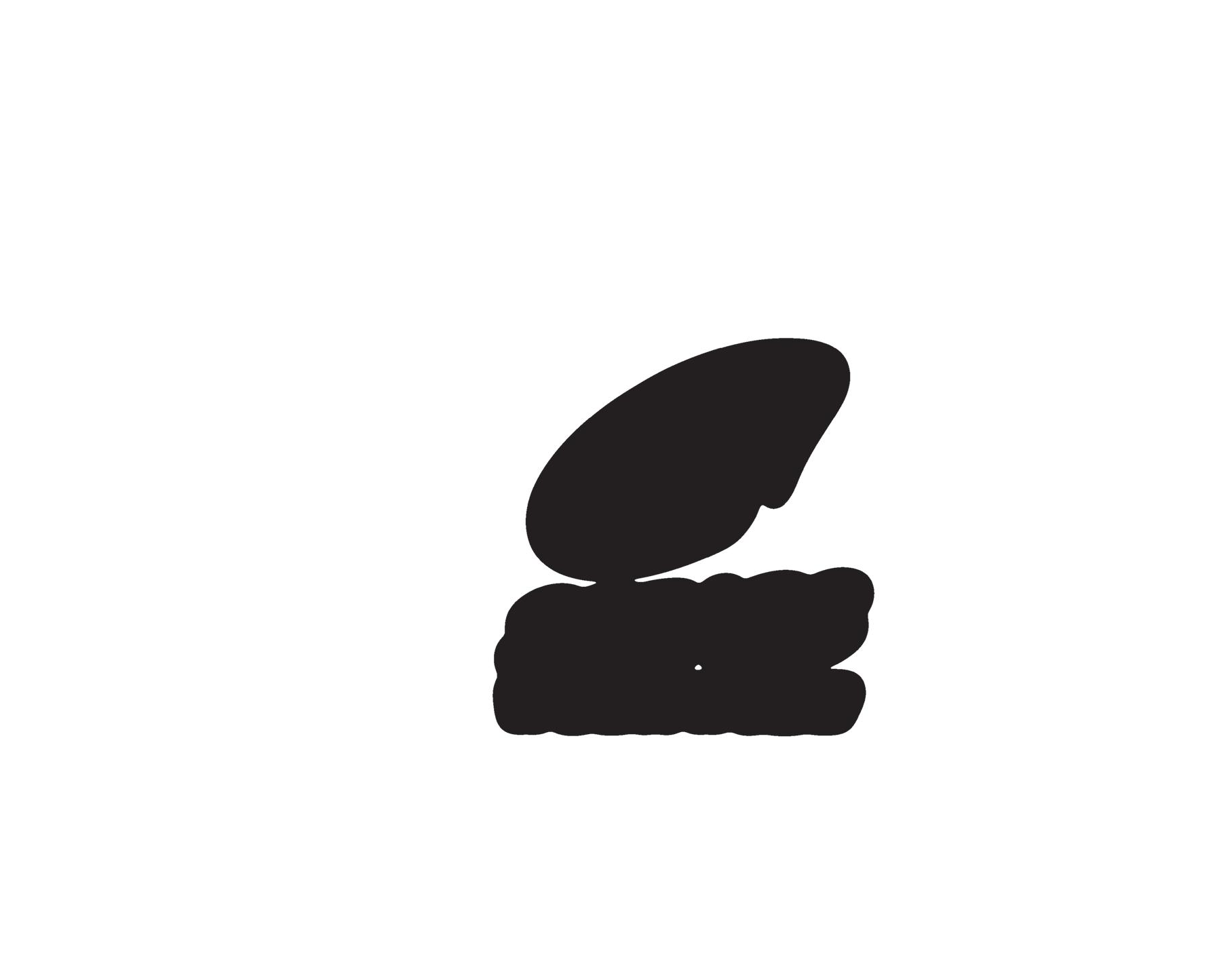






02 6280 4111 ww w.seea r s w o r k w ea r.com.a u 60 Barrier Street, Fyshwick ACT ORDER NOW MSA AUTHORISED DEALER Australia wide distribution TRADE AND MASTER BUILDER MEMBER DISCOUNTS APPLY Canberra’s largest workwear outlet Your one stop workwear and safety shop Full range of: • Harnesses • First aid kits • Safety equipment • Protective clothing • Corporate and trade uniforms • Wide range of protective gear • Workwear for all trades Member of MBA & HIA
POLITICS / artificial intelligence

The political dangers of a brave new AI world
ALDOUS Huxley’s novel “Brave New World” and George Orwell’s “1984” describe a range of techniques governments use to monitor citizens.
However, their worlds will seem relatively benign considering how artificial intelligence (AI) is set to allow politicians to monitor, collect and store so much information.
Journalists Keppler and Swenson pointed out in an Associated Press article that “computer engineers and tech-inclined political scientists have warned for years that cheap, powerful artificial intelligence tools would soon allow anyone to create fake images, video and audio that was realistic enough to fool voters and perhaps sway an election”.
The article examined the likely impact on the American election next year with a warning about creating fake images and using AI to deliberately mislead voters.
What are the chances that AI will also play a part in the next ACT election to be held just a few weeks earlier on October 19 in 2024?
The warnings that Keppler and Swenson flag are also warnings that ought to be heeded by the people of the ACT. Political campaigns in the US have been much more blatant in the way they mislead.
In Australia, and particularly in the electorates in Canberra, the framing of messages and the use of “spin” to put the best foot forward are more common techniques than blatant lies. At the last federal election, Senator David Pocock was falsely portrayed as a Greens candidate. The banners set up on the side of the road showed the candidate pulling back his shirt, Superman style, to reveal the Greens’ logo. This simple technique illustrates that attempts to mislead the public are seen as a normal part of campaigning.
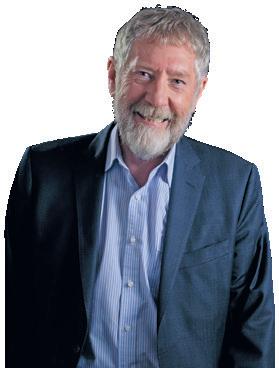
Tailored messages directed to


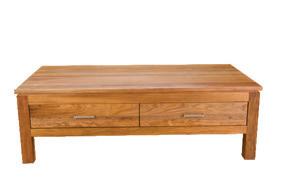
an individual by employing AI will become more and more sophisticated. There is a myriad of individual personal information available thanks to personal memberships of organisations, use of cards to gain “points” and, most importantly, liberal use of social media platforms. AI has the ability to scour the internet, to build a clear profile on individuals and “rapidly produce targeted campaign emails, texts or videos”.
It is these profiles that allow misleading personalised messages. Even in the current environment,
most people using social media will have been exposed to tailored messages suggesting purchase of particular items. Imagine how the same approach could be used to tailor political messages to address individual concerns.

Such messages do not have to be based on the truth with a goal to appeal to the values of the individual. A more sinister approach based on fear and confusion is described by Keppler and Swenson where “AI is used to create synthetic media for the purposes of confusing voters, slandering a candidate or even inciting violence”.
They provide further examples from people with AI expertise. These include, “automated robocall messages, in a candidate’s voice, instructing voters to cast ballots on the wrong date; audio recordings of a candidate supposedly confessing to a crime or expressing racist views; video footage showing someone giving a speech or interview they never gave”.

Additionally, there have already been examples of “fake images designed to look like local news reports, falsely claiming a candidate dropped out of the race”.
These techniques are American




based, and some would not work so well in Australia where it is compulsory to submit a vote.
There have been some attempts to legislate more honest campaigns and to have AI identified (or “watermarked”). A search of the Australian Electoral Commission’s (AEC) website with the words “Artificial Intelligence” returns a zero result. However, this does not mean it is not being considered. It should be expected that their Electoral Integrity Assurance Taskforce would have AI on their agenda.
The federal, state and territory electoral commissions would also benefit from work done by each other. There is Buckley’s chance that political parties will not use AI as part of their campaigning devices. Politicians are always looking for the edge. Our democracy needs enough vigilance to contain the genie in the bottle for as long as possible – at least until appropriate legislation is understood and put in place.
6 CityNews May 25-31, 2023 Beautifully crafted Australian made beds, dining tables, chairs, living room pieces, entertainment and more! YES, WE CAN CUSTOMISE TO YOUR SPECIFICATIONS *For Senior Card Holders-does not include already reduced floor stock 100 BARRIER ST, FYSHWICK | OPEN 7 DAYS E: timberlandfyshwick@gmail.com | 6280 7411 10% OFF FLOOR STOCK* MUCH MORE IN STORE! IT’S TIME TO SEE TONY! COME IN & FIND THE PERFECT PIECE FOR YOUR HOME!
dose of dorin

ARE YOU A FOOD LOVER SEEKING A NEW STORY TO SHARE WITH FRIENDS?
from Batemans Bay in the north, to Eden in the south, it is here you will find local flavours and people passionate about food. Explore the Gourmet Coast Trail visit gourmetcoasttrail.com.au follow us @gourmetcoasttrail
Stretching
Andrew goes from wall paintings to painting walls
By Lily PASS
ANDREW Grassi-Kelaher, 50, has had his art displayed in Aarwun Gallery in Gold Creek for more than 20 years.
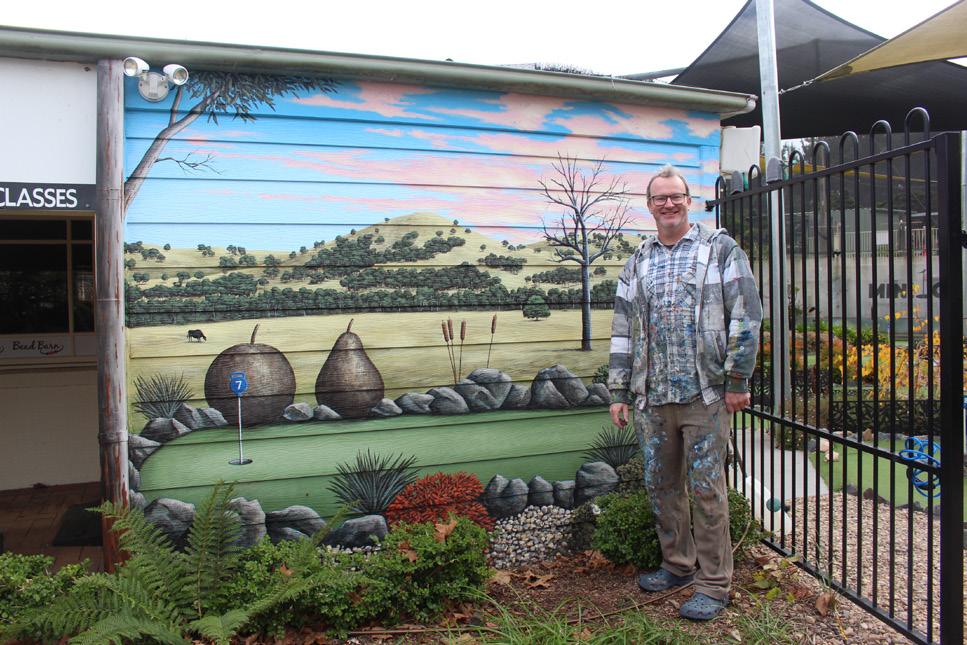
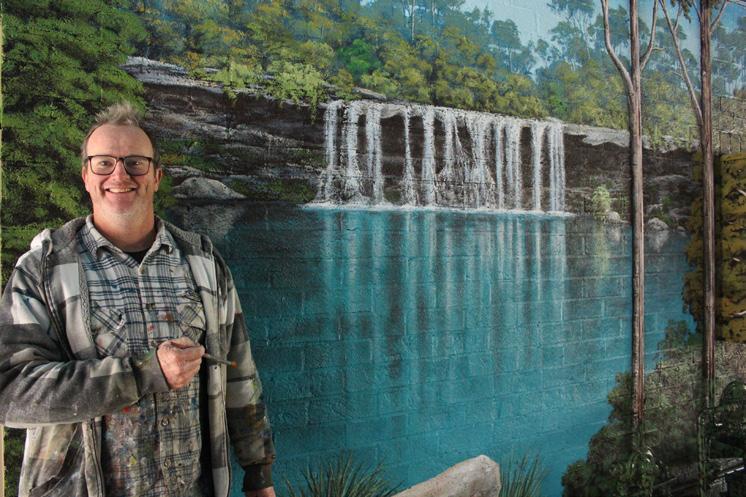
But, in the last six years, his work in Federation Square, Nicholls, has grown to new and exciting heights.
“I’m an artist, that’s my proper job, but I did my first mural 10 years ago,” he says.
“Some people in Sydney collected a lot of my paintings, and I dropped off a commission piece and I jokingly said if they want any more paintings I’ll have to paint their back fence, and they asked if I could actually do that and gave me some money, twisted my arm, so I did it.
“I painted this big mural on their back fence and I didn’t even sign it, and from that mural, even without a signature, people knocked on their door to ask who painted it and it’s grown from there.”
As his popularity grew, Andrew was asked to paint a mural
Lyn Anderson, who own Federation Square, and they organised for me to come down and
Since 2017, Andrew has spentberra, away from his Central “Originally, I painted around the side of the gallery, but they did some extensions so they got me back down to do some more painting,” he says.
“I now have murals at the gallery, the mini-golf, the reptile zoo, the Christmas shop and I’ve been asked for quotes for the dinosaur museum, too.”
Lyn says Andrew is a beautiful, gorgeous and very clever man, and she’s pleased to see so much colour and joy on the walls.

“He’s currently working on a mural in the alleyway, it’s a redbelly black snake,” she says.
A 3D snake head will sit out facing the car park, with people encouraged to follow its body as it leads all the way through, “to make the lead into the reptile park a bit of fun,” says Andrew.
“Talking and chatting with people as they pass by is my favourite part of doing this.
When I’m at home in my studio painting, I’m by myself a lot and it gets a bit boring.
“Thankfully I have the best
A bit of a child himself, Andrew admits he likes to hide subtle things in his art.
“I started exhibiting paintings really young, in my early 20s, and one day I did a big exhibition in Sydney,” he says.

“My mates told me to do something funny, so I hid little nude women in all the paintings and the exhibition sold out and we had a laugh about it, so now it’s a thing. Whenever I have an exhibition there’s something hidden in all the paintings, and in some of these murals, too.”
In his murals around the Gold Creek Christmas shop, Andrew has hidden gingerbread men all the way through.

“Little kids love it, running around trying to find all the hidden gingerbread men, and I love seeing the joy it brings them.
“The Christmas shop got an
photos on.”

Andrew signs his paintings as Grassi, because his nickname as a kid was grasshopper.
“I thought Grassi looked classy, arty, so now it’s like a hyphenated last name, Andrew Grassi-Kelaher. Grasshopper came about from when I worked in a snow ski shop and the guy who taught me to tune the snow skis was the master, and I was the young grasshopper,” he says.
In a secret admission to “CityNews”, Andrew shares he does have a science degree with a double major under his belt.
“It’s probably not good for my art reputation that I’m a nerd, I did really like science. But, I worked in an office job in Sydney where I used my degree for not even a month, and then I quit and never went back,” he says.
8 CityNews May 25-31, 2023 Carpets ∙ Rugs ∙ Vinyl ∙ Timber ∙ Laminates We don’t just endeavour, we do! Phone 6280 6132 endeavourcarpets.com.au Cnr Newcastle & Isa Streets, Fyshwick COME IN & DISCOVER CANBERRA'S GREATEST FLOOR SHOW! *All specials are for orders and installs for April/May 2023 #FREE Upgrade to 9mm underlay Celebrate 53 years with us! BLACKBOARD SPECIALS* Discounts on selected Carpet ranges including underlay upgrades# NEWS / cover story
Andrew Grassi-Kelaher works on the reptile zoo’s waterfall and lagoon mural at Federation Square… “Thankfully I have the best job ever, and seeing people’s response to my work, especially little kids, it makes their day and that, in turn, makes mine.” Photos: Lily Pass
Andrew Grassi-Kelaher in front of his mural for the mini-golf course at Federation Square.
The Grinch gets an arm around the artist at Grassi-Kelaher’s mural outside the Christmas shop where Andrew has hidden gingerbread men all the way through.
COME OUT TO THE WALK IN AVIARY THIS LONG WEEKEND
Come along and see the friendly free-flying birds that can be photographed and fed. Walk amongst over 500 birds from 50 species from Australia and around the world!


BOOK VIA OUR 'BOOK NOW' BUTTON ON canberrawalkinaviary.com.au (Online bookings preferred but not essential)
FREE ADMISSION FOR KIDS UNDER 4
When accompanied by a full paying adult
Open 7 days a week from 10am to 4pm, last admission 3.30pm
Social distancing encouraged
COME ALONG & VISIT THE WALK-IN AVIARY & THEN ENJOY THE GOLD CREEK VARIETY SHOPS & ATTRACTIONS Unit 13 Federation Square, O’Hanlon Place, Nicholls
6230 2044 | canberrawalkinaviary.com.au
Phone
Rage, rage against heat islands and fewer trees
THERE’S a relatively new driveway off Angas Street, Ainslie on the side of the Ainslie Football Club. It goes nowhere –it serves no known purpose.
Given the involvement of the Ainslie Football Club and the ACT Planning Authority, this driveway to nowhere aligns with the questionable stuff involved with the footy club’s moneymaking development proposals.

The club wants to boost its finances by converting much of the northern parking areas to residential apart ments. There’s also to be a commercial childcare centre on the southern end.
Residents have spent hours trying to engage positively with the proponents of the footy club developments, with little success.
Given the political connections and the monies involved, there was little chance of volunteer community groups having the club’s outcomes changed.
When the ACT’s sporting clubs set out to bring in the cash through profit-making developments, they happen. That’s how things are with the ACT Greenslabor government.
Canberra’s community groups consist of a diversity of people. They volunteer time to work together on matters of interest because they value this city and wish to hand on to future



generations suburbs that deal with the increasing climate emergencies and provide a fantastic lifestyle.

They volunteer their time with the misplaced aspiration that the ACT Labor and Greens coalition government share these values. They do not.
It usually falls to volunteers to take on the combined battalions of developers, sporting clubs and their troops of experts and well-paid legals.
The real crunch comes when they have to confront the taxpayer funded ACT planning authority which also shows up with its expensive lawyers and hand-picked experts.
It is this combined wall of money and allied power that residents take on when they challenge the questionable norms of the ACT government to

allow clubs to convert or sell their community assets, usually open spaces, to bring in cash for the clubs. The community’s efforts are largely in vain.

“Building a Better Normal” in this city has translated to clubs and other organisations having the government’s blessing to change their leases to build apartments and/or to sell off land.
There may be a climate emergency, but for this government and its money hungry allies, open green spaces are land banks. The reality behind the worthy-sounding rhetoric of the ACT Greens is that Canberra has enough birds, trees and other critters – so a few less and more heat islands is just fine. That’s Greenslabor’s gentle urbanism!
The motivation of the clubs is that without an injection of massive funds, the clubs will most likely become financially unviable. With management starved of innovative ideas,
the clubs relegate community assets, open spaces, birdlife, the environment and opportunities to deal with climate as being of secondary interest. The high priority interest is money and business as usual.
As for the residents who have learnt that they have almost no control over developer-driven outcomes that will change their suburban environments – they must not give up.
They should be proud that they have stood up to be counted and have let the monied cohorts know that there is a community that holds to its values –despite everything thrown at it.
That Ainslie Footy Club driveway is no Stairway to Heaven. It sits there as a weird message to the pesky residents.
The government and its friendly developers know what they do and how they are playing the community with alternative facts and a twisted use of what remains of the planning rules.
Change will happen one day as autocrats eventually stumble. It will take patience, creativity, courage and clever ways to use the scarce resources available to community groups.
Residents may have lost skirmishes with monied clubs and developers, but they should continue to send the message that their values remain intact and that what the coalition of developers and government is doing does not align with the community’s values and aspirations.
There are many fun things to enjoy, most of which can be done despite the blandness of this Greenslabor government. Do not allow unfriendly developers and this government to define you. Be prepared to put them on notice again and again – but also do fun stuff with and on behalf of your diverse communities. And thank you for doing what you do.
Paul Costigan is a commentator on cultural and urban matters. There are more of his columns at citynews.com.au
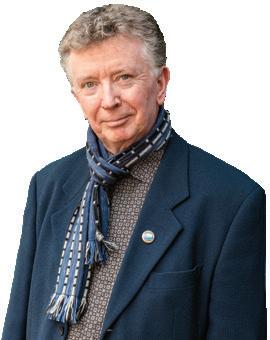

10 CityNews May 25-31, 2023 Discover the Discover the hope, joy wonder & of our Enrol now! Be part of a welcoming, supportive, connected community that supports your child to reach their potential. A place of faith, learning and opportunity that provides education opportunities for all cg.catholic.edu.au Catholic schools Catholic schools hope, joy wonder Catholic Schools Serving the ACT for 95 years Catholic Schools Serving the for 95 Catholic Schools Serving the ACT for years Serving the ACT for 95 years ACT LOLLY SWAGMAN Bringing Happiness since 1991 Sweets, Treats, & Indulgences for Kids of All Ages Featuring Mrs Swag’s famous Fabulous Fudge Open Monday to Friday 9:30-4:00 Weekends & Public Holidays 9:30-5:00 mrs.swag@lollyswagman.com.au www.lollyswagman.com.au 11 Old Hume Highway Berrima 02 4877 1137
When the ACT’s sporting clubs set out to bring in the cash through profit-making developments, they happen. That’s how things are with the ACT Greenslabor government.
CANBERRA MATTERS
The Ainslie Football Club driveway to nowhere… sitting there as a weird message to the pesky residents.
THE GADFLY

Rewilding, a way to correct mistakes of the past
MY long-time friend and fellow author, Peter Thompson, was recently strolling in Hyde Park, London, where he now lives (appropriately) in Thackeray Street, when he came upon a scene that stopped him in his tracks.
Peter’s a regular London walker and it takes a lot to surprise him. The last time I accompanied him on one, the actor Bill Nighy crossed the road to chat (that was my turn to stop in the figurative tracks!).
What absolutely stunned Peter this time was the appearance of a series of “rewilding projects” in the western area of the park, which had escaped his attention for several years.

“They have turned whole acres into medieval forest,” he says, “with thick undergrowth and huge dishevelled oaks dripping with vines to form such a barrier of foliage that you could get lost in there.
“This sort of scenery disappeared under Capability Brown, who landscaped everything and turned the forests surrounding great country houses into the sort of characterless parkland that we see in Jane Austen movies.”
I have since learned of other similar projects in Europe, Scandinavia


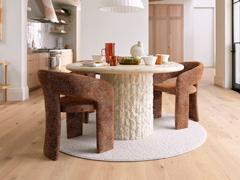


and North America with the same general philosophy. The revelation could hardly have come at a more opportune time since, as mentioned in an earlier column, I’m writing the first biography of our own great arborist, horticulturist and gardener, Charles Weston who between 1913 and 1926
planted some three million trees and shrubs in Canberra and its surrounds in pursuit of his “dream city”. His task, for which he’d trained 17 years in Britain, rising to the top of their massive garden industry, then a further 15 in Australia at the Sydney Botanic Gardens before creating
what his obituarist in 1935 called Canberra’s “green mantle”. But it’s very much more than decoration for the bush capital, nor even a fortress against the worst effects of climate change. What Peter’s observation confirms is a movement – of which Charles Weston was a pioneer – to bring the world back to health by revisiting the past and learning from our fatally mistaken greed and wilful ignorance.
When Weston first ventured to the Capital site in 1911, he was confronted by a landscape ravaged by the early colonial settlers who ringbarked every tree in sight and whose sporting compatriot Thomas Austin in Winchelsea, Victoria, in 1855 had released 13 European wild rabbits – specially collected by an English relative. The voracious herbivores had by then become a great grey tide across the Limestone Plains. Weston’s massive reafforestation would have to begin with their elimination.
Today there’s now a gradual realisation that to save the planet and our place within its natural habitat we need to appreciate the mistakes we have made and to seek the wisdom of our forebears. And in the Great South
Land we occupy, the opportunity is at last at hand to make our contribution. In simple terms it’s a “Yes” vote in the referendum for the Voice.
On a different authorial issue, I’m delighted to report that my biography of the late Trevor Kennedy has now been privately published. Born in far off Albany, WA, Trevor turned “The Bulletin” into Australia’s mustread news magazine, rose to head Kerry Packer’s Consolidated Press, including “The Women’s Weekly” but they fell out over the attempted takeover of the Fairfax newspapers. He and Malcolm Turnbull then became multi-millionaires as pioneers of Australia’s first email company; and Prime Minister Paul Keating offered Trevor the post of ambassador to Washington DC.

I understand that if there’s sufficient public interest, the publisher will make it available online and print on demand.

robert@ robertmacklin. com





CityNews May 25-31, 2023 11 Visit us today in store or online for everything HEMP! H E M P Ph: 0431 318 898 | 84 Wollongong St, Fyshwick | southpacifichemp.com.au | Opening hours: Monday-Friday 10am-4pm Saturday 10am-3pm 10% OFF ALL HEMP HATS MAY + JUNE ONLY QUALITY AUSTRALIAN HEMP PRODUCTS 5% Discount - Seniors card holders TERRY BROS CARPET COURT - FYSHWICK 76 Barrier St, Fyshwick ACT 2609 P 6280 5703 TERRY BROS CARPET COURT - PHILLIP Hindmarsh Dr, Phillip ACT 2606 P 6285 1888 *You must be a Qantas Frequent Flyer member to earn Qantas Points. Members will earn 1 Qantas Point per $1 spent on retail flooring and window furnishing products purchased from Carpet Court retail stores or online. Full terms and conditions available at www.carpetcourt.com.au/qantas-frequent-flyer
What was heard in the silence that screamed
TWO of the most telling questions made during the Board of Inquiry into how police, prosecutors and a victim support service handled allegations made by Brittany Higgins against her former colleague Bruce Lehrmann, have been from the Commissioner Walter Sofronoff.
One was his wrap up question to Director of Public Prosecutions Shane Drumgold SC, following an effective cross-examination by advocate Sue Chrysanthou SC. Mr Drumgold’s answer to the question was fatal.
The second was the commissioner’s almost throw away (he has the ability to make grenades look like Easter eggs) question to the rows of lawyers in front of him: would any of them be submitting that Mr Lehrmann should not have been charged, that the case should not have gone to trial?
Silence – that’s the response by those ranks of people whose careers are carried on words, spoken and written. They were, one and all, silent. That was a profound silence and we need to ask what it means.
Bear in mind that since day one we have heard repeatedly that the investigating police had concerns both as to the sufficiency of evidence,
and the credibility of key witnesses. It’s possible that information in documents before the inquiry not read by us, together with the spoken evidence, will show that investigating police concerns were less than they now seem.
However, for the purposes of the rest of this article, please assume that present impressions remain undisturbed. That is, we will imagine that what we saw and heard in the public hearing is all that there is: how then does this affect the future of our criminal justice system?
Denunciation of demons
Demonisation and the denunciation of demons is an age-old human trait. You don’t think so? Let me remind
you of the denouncers of witches and witchcraft, the proponents of antisemitism, Senator Joseph McCarthy’s 1950s anti-commie campaign that destroyed so many careers, and Mary Whitehouse and her “Christian decency” moral campaign.
Today’s top-of-the-pile denouncers are those who allege they have been sexually violated. The truth or otherwise of the allegation is not the issue: it’s the nature and impact of the expected response that should concern us.
Consider for contrast the unremarked lot of those who survived years in the World War II concentration camps or more recently, years in our infamous concentration camps, euphemistically called refugee processing centres.
Human nature doesn’t change so we are doomed to repeat our errors. During World War I, the Order of the White Feather was a campaign to shame men into signing up, thus associating the white feather with cowardice. That widely countenanced public shaming is the antecedent of today’s trolling and cancel culture.
DPP Drumgold’s assertion that our police have been “undercharging” (that is, not charging at all, or charging too leniently) reflects a prism that the “Denouncer” is pure of heart and the attacked is not.
A criminal charge should reflect an

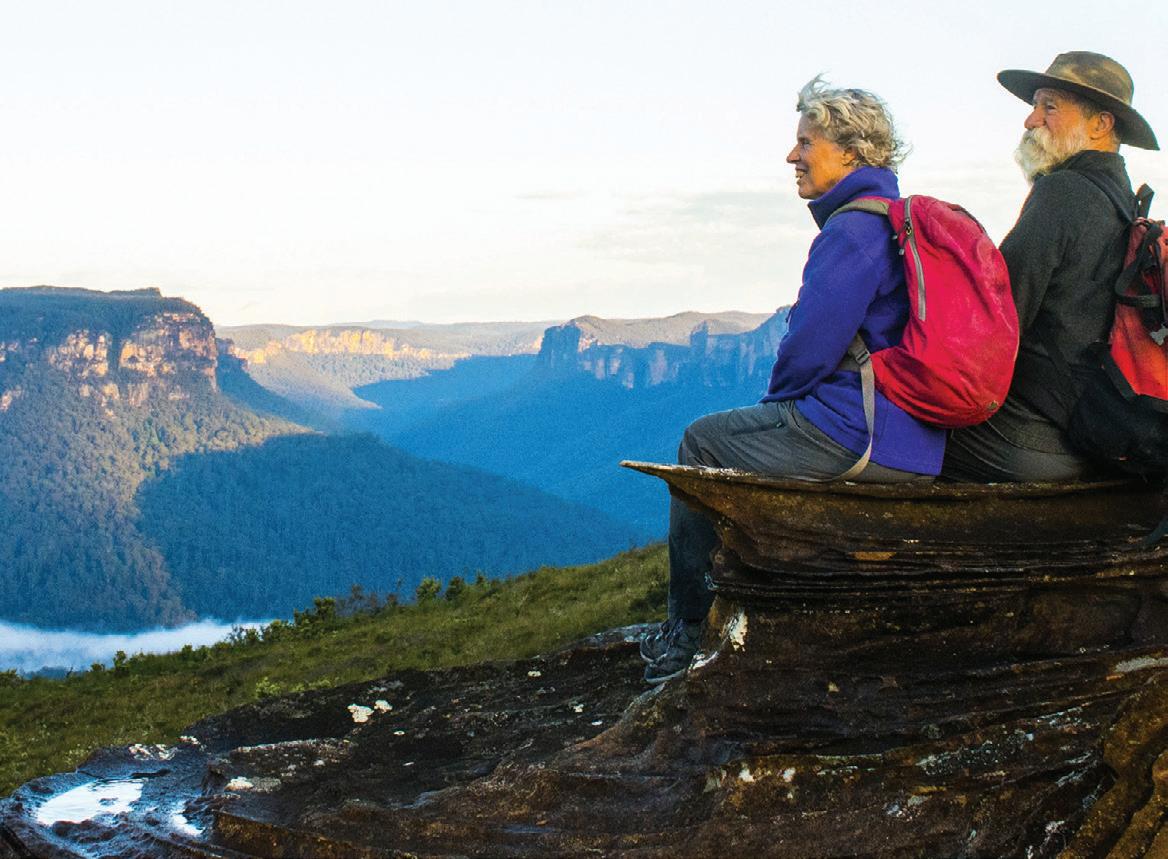
assessment not just of the quality of the gathered facts, but also the believability of each person who “carries” those facts. There’s nothing new or unusual about this. Every day of our lives we weigh up what we are told and who is telling us. Then we decide whether to accept or reject it.
Please spare a thought for those competent police who are the collateral damage. Instead of thanks and gifts they have been subject to allegations of being incompetent, boofheads, but above all else – out of touch.
Silence ensures survival
Those lawyers on the screen during the inquiry have done well career wise, through talent and hard work. Some of them might be hoping for appointment as a judge. They want work, good-quality work.
Given our assumptions each of them would be mad to have answered that question with anything other than silence. If an advocate is seen as “suss” the phone does not ring, queries as to availability dry up. Politicians appoint judges. I need say no more. This is not a new phenomenon. During World War I, the Irish patriot
Roger Casement was on trial for treason. No English senior counsel would represent him. An Irish silk finally agreed, giving rise to the “cab rank” rule: if you take work in an area of law, eg criminal defence, then you should take a case that is offered, no matter what your private thoughts and aspirations. There are so many let outs that the rule is weak, but the concept remains admirable. If I had been at that bar table I would have chosen silence. You would, too.
That leaves Commissioner Walter Sofronoff KC to answer his own question or deftly kick it away into the long grass. Putting aside the assumptions for this article, I hope that in the coming days and thereafter there is more evidence to help him.
Former barrister Hugh Selby is commentating on citynews.com.au daily on the Sofronoff Inquiry’s public hearings, focusing upon the advocacy and witness performances.

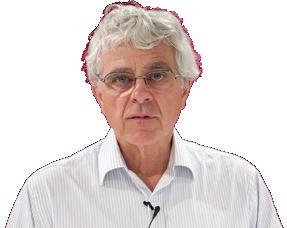
12 CityNews May 25-31, 2023 As a member of our community you have access to: • expert advice and support via our customer care line • the latest health information • great food tips and recipes • free and discounted events and programs • special deals at our online shop diabetesshop.com To join, or to find out more about the advice and support we offer, call our ACT office on 02 6248 4500 or visit diabetesaustralia.com.au
Diabetes Australia has been helping people living with diabetes for over 80 years.
LEGAL OPINION / The Sofronoff Inquiry
Commissioner Walter Sofronoff.
BRIEFLY Free course to manage money






ANYONE wanting to be more in control and confident with their finances may like the idea of a free money management course being run online 7pm-9pm, over three Tuesday evenings in June (6, 13 and 20). Hosted by Christians Against Poverty, the established CAP course aims to help participants develop skills to budget, manage debt and save. Register by May 31 at capmoney.org.au or email capmoney@tbcchurch.com.au or call 0402 007551.
Sleepbus seeks help
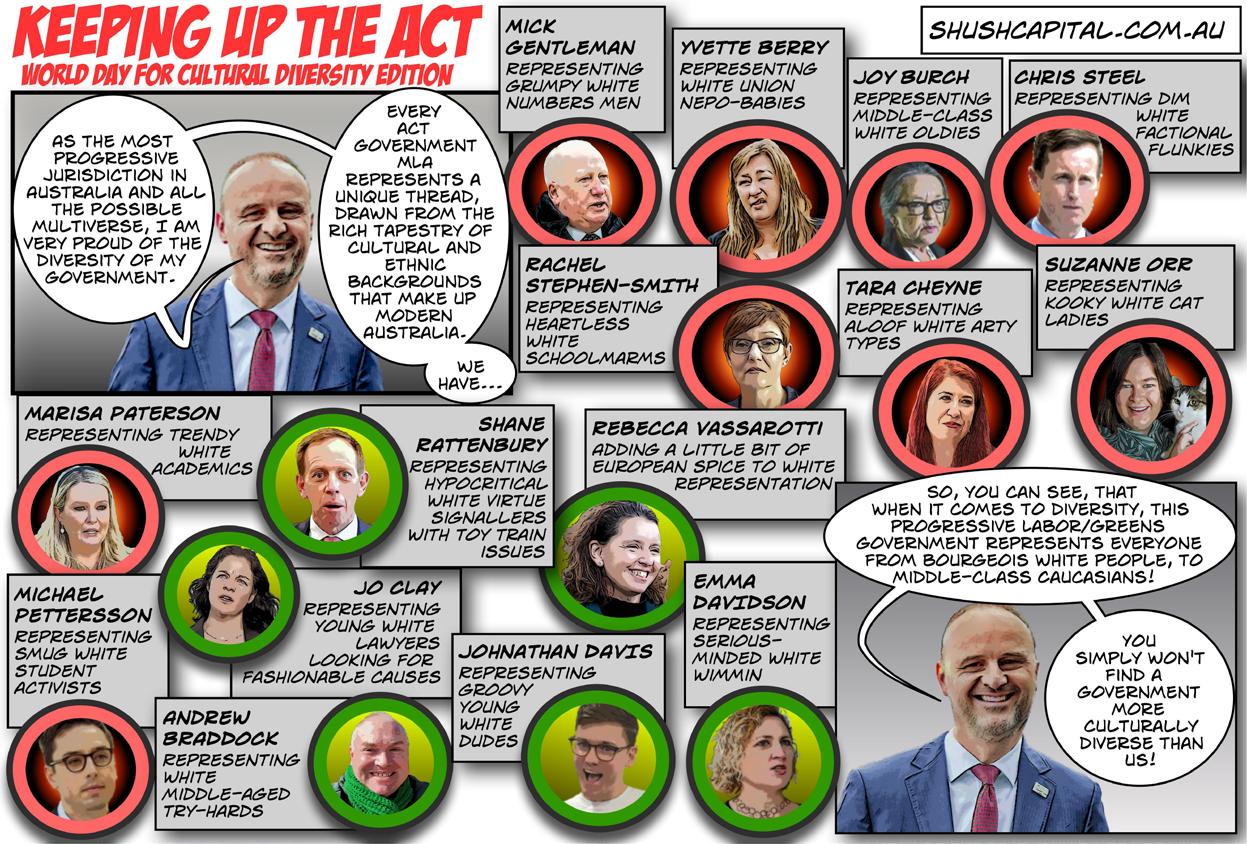
THE Queanbeyan Sleepbus is looking for volunteers to help with its mission of providing temporary overnight accommodation for anyone who needs a safe sleep. The sleepbus is run entirely by volunteers and they’re looking for help with driving (MR licence and experience required), caretaking, night service and housekeeping. Apply at sleepbus.org/volunteer
Anniversary orchestra
THE Canberra Mandolin Orchestra will entertain the ladies of the Weston Creek VIEW Club when they meet for the club’s 51st anniversary lunch at the Canberra Southern Cross Club, Woden, on Tuesday, June 6. There will be market tables and a raffle. Guests are welcome and the cost is $38. RSVP to 0402 958535 by the evening of June 1.
CityNews May 25-31, 2023 13 For successful results in a cost effective manner call 6281 0999 or email kjblaw@kjblaw.com.au Ground Floor, 10 Corinna Street, Woden Comprehensive, expert advice in your time of need • Matrimonial Property settlements • Parenting Arrangements for Children • Divorce • Binding Financial Agreements • De Facto relationship breakdowns We are able to assist in negotiations and/or represent you in: CELEBRATING OVER 45 YEARS 5A Beltana Road, Pialligo, ACT 02 6257 6666 • www.coolcountrynatives.com.au AUTUMN IS THE PERFECT TIME TO PLANT Covid restrictions enforced LARGE VARIETY OF TUBESTOCK! TRADING HOURS Monday-Sunday 8.30am-4.30pm
It’s got a couple of advantages, this dad stuff
IT’S a funny old thing, being a parent. One day you are a selfish bugger interested in who’s beating Saints this weekend, next thing you’re sleep deprived, tortured by ghastly noises, have no recollection of your last meal or fun, and see no future without this daily constant grind.

It’s a bit like your mate Gandalf shouted you a one-way ticket adventure holiday at his timeshare in Mordor. And yet. It’s got a couple of advantages, this dad stuff.
First, it’s a sensational introduction to the world. Happiness, some say, equals something to do, something to love, and something to look forward to. The company of others is generally a positive – I know it means a great deal to me.
I met a lovely, smart, funny woman at work this week who’s been in Canberra with her spouse for many months and still hasn’t connected with people. I know they’ll be fine, of course, but recall how fortunate we were on arriving here with little terrors.
Within weeks the sporting sidelines had provided lovely people who we lived near. Almost 20 years later so many of them are our closest friends,
work colleagues, business partners, walking companions.
Gosh, my mum-in-law is still friends with the same sporting-field fellow mums of 50 years ago. Kids’ piano recitals and epic cricket fails serve a friendship purpose even deeper than finding their own crew. They found ours. Our children also refresh my optimism. Times are changing, and it’s so easy to get jaded and cynical. Our media, our zeitgeist sometimes changes quicker than a teenager’s
hairstyle. It’s easy to feel you’re tossed on ever changing social seas, and that’s why it’s pretty good to get grounded by the philosophical utterances of tiny people whose faces are covered in their latest meals. And years later covered in facial hair so tragic and wispy that you begin to miss the Vegemite moustache!
Of course, the cliché is that their greatest gift is that they make us better people. There is no doubt that parenthood makes you think of another person, their needs and safety and search for their character and purpose, and in itself that should hopefully make you a nicer human. Mums lift cars to rescue their wandering toddlers. Dinosaur dads sit through hair braiding and ballet. I get it.
What I don’t get is how the parent or not-parent divide is anything but respectful. Some people choose very validly not to have kids. Not that it has to be “valid”. It’s their choice. In some European nations they are in the majority. Some people who’d love to have kids, can’t. Them with kids should not pity or argue or be hostile. We should just all get along and respect each other for the choices we make, or the choices a seriously disinterested universe made for us.
Why bring this up at all? Well, aside from a vote for tolerance, tact, respect and empathy, an understanding that others make different decisions to us,
we should be on the lookout for the inevitable policy decisions and debates that come about, and use them as a chance to care for each other. Should IVF be available? For whom? For straight, married people in secure jobs? What about 44 year olds? How about 16 or 64 year olds? Should the taxpayer pay for it? How many tries should Medicare pay for? What about LGBTQI couples (a question asked in the 1990s which I hope to goodness is not even a question any more). Or the less well off? Or people with an illness? And that’s even before the kid arrives.
There are thousands of other scenarios that demand all of our collective decisions, from premature
babies’ life support, paying for the NDIS, leave entitlements, and God knows what else. I hate the idea of telling anybody how to live their life or put a limit on their freedom. Decisions about kids also raise collective moral choices. If mum’s on a work trip and I did not feed them a vegetable for five days, does she really need to know? When a troll turns 18 just how many dings can he put in a car before it’s mentioned? Silly or deadly serious, let these collective choices be made with intelligence, collaboration and listening more than speaking.
If love is added, judgement deleted and prejudices left at the door, surely then the best possible decisions will be made.
Antonio Di Dio is a local GP, medical leader, and nerd. There is more of his “Kindness” on citynews.com.au
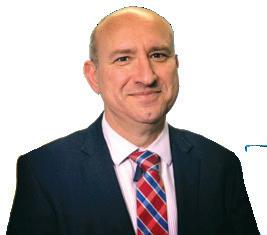
St Jude’s Primary School and Early Learning Centre (Preschool)

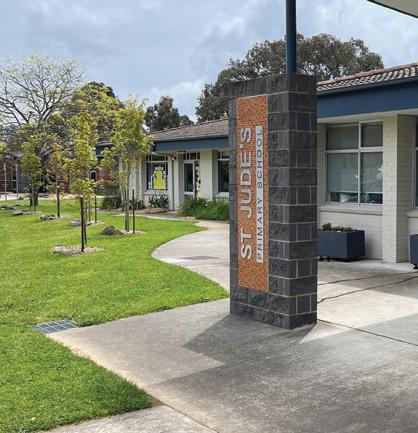
At St Jude’s we want to create an innovative and collaborative community where all children are encouraged to grow to their full potential
Enrolling now for families in Holder, Duffy, Weston and Molonglo! Places are available in 2023 for Years 2 – 6 and in 2024 for ELC, Kindergarten – Year 6

Ph 62887688
www.stjudesps.act.edu.au

14 CityNews May 25-31, 2023
St Jude’s Primary School
Mulley Street, Holder ACT
There is no doubt that parenthood makes you think of another person, their needs and safety and search for their character and purpose, and in itself that should hopefully make you a nicer human.
KINDNESS
It’s pretty good to get grounded by the philosophical utterances of tiny people whose faces are covered in their latest meals.
/ collective choices
Clive’s got a good nose for a story about smells
“Nothing revives the past so completely as a smell that was once associated with it”
– Vladimir Nabokov
MOST people like some smells, such as the fragrance of roses. As Shakespeare noted: “That which we call a rose by any other name would smell as sweet.”
Some we universally don’t like, such as dirty nappies, vomit or roadkill.
At a more cerebral level, Margaret Thatcher observed icily: “I smell the stench of appeasement in the air.”
You may have wondered how smell gets from its source to us? Or perhaps not. Scientist Julius Sumner Miller would have said: “Why is it so?”
Smell travels through the air, from its source to our noses, through a process called “olfaction”. Olfaction occurs when tiny molecules from an odour-emitting source are carried through the air and reach our noses. A smell is spread more efficiently by air movement, which is why carnivore predators stalk their herbivore prey from downwind.
These odour molecules bind to specialised sensory receptors in the nasal cavity, triggering electrical signals that are sent to the brain, where they are interpreted as a
flowers or perfumes. These odour molecules are usually small and volatile, meaning they evaporate easily and move freely through the air.
When an odour molecule reaches our nose, it contacts the mucus that covers the olfactory epithelium, a specialised patch of tissue located in the upper part of the nasal cavity.
The odour molecule then binds to a specific type of receptor in the olfac -
olfaction is the interpretation of the electrical signals in the brain as a particular smell. This interpretation is based on patterns of activity in the olfactory bulb and other parts of the brain, as well as past experiences and memories associated with different smells.
For example, the smell of freshly baked bread might trigger memories of childhood and evoke feelings of

comfort, while the smell of bushfire smoke might trigger feelings of alarm.
In conclusion, the sense of smell is a complex process that involves the release of odour molecules into the air, the binding of these odour molecules to receptors in the nasal cavity, the transmission of electrical signals from the receptors to the brain, and the interpretation of these electrical signals as a particular smell. This process allows us to detect and experience a wide variety of different smells, and to associate these smells with memories, emotions, and other experiences.
Two interesting quotes about smells:
“A wedding is a funeral where you smell your own flowers” – Eddie Cantor

“I judge people on how they smell, not how they look” – Jennifer Lopez
On a smell-related lighter note:
A Catholic priest is driving to New York and gets stopped for speeding. The state trooper smells alcohol on the priest’s breath and sees an empty bottle on the floor of the car. He says: “Father, have you been drinking?” “Just water,” says the priest. The trooper says, “Then why do I smell wine?” The priest looks at the bottle and says, “Good Lord! He’s done it again!”
Two children order their mother to stay in bed on Mother’s Day. As she lies there looking forward to breakfast in bed, the smell of bacon floats up from the kitchen. After a good long wait she finally goes downstairs to investigate. She finds them both sitting at the table eating bacon and eggs. “As a surprise for Mother’s Day,” one explains, “we decided to cook our own breakfast.”
Julie Andrews will no longer be endorsing Revlon Vibrant Shades lipstick. She claims it breaks down too easily and makes her breath smell. In a statement she said: “The super colour fragile lipstick gives me halitosis.”
An Australian aid worker flies to Africa to do some charity work. It’s an eye-opening, shocking experience for someone who has never travelled internationally before. The poverty, the starvation, the noise, the fighting... the smell. “Yes,” she concludes, “I’m never flying economy again.”


CityNews May 25-31, 2023 15 A valid and up-to-date will can help reduce stress for your family and friends, limit administration costs, and lessen the possibility for dispute over your estate. Who will benefit from your will? Ashilpa Khanna Wills and Estate Planning Lawyer. Notary Public. For all client meetings COVID-19 adherance applies First Floor, 32-38, Townshend Street, Phillip enquiries@chsol.com.au chsol.com.au For the best outcome when it matters how it’s done call Capon & Hubert on 6152 9203 WHIMSY
/ How we smell a smell
Clive Williams is a Canberra columnist.
A sniff is just a sniff… smell travels through the air, from its source to our noses, through a process called “olfaction”.
Bring on election: Calvary staff saved my daughter
ENOUGH is enough. The Calvary hospital takeover is definitely putting Canberrans in danger of bad health consequences.
While the Calvary surgeries were closed last year because of a fire, my daughter had to go to Canberra Hospital to deliver her baby.
She was kept in a waiting room for two hours while in labour, – no gown or clean up. She eventually gave birth and was put into a patient transport ambulance and taken to Calvary. Within a day of this Calvary staff detected a staph infection caused possibly from stitches she was given by a student with no supervision in Canberra Hospital.
She was in great danger. Calvary staff saved her life, as they did with my husband several weeks ago when he contracted severe covid.
I am disgusted that this ACT government is so pigheaded about the concerns of Canberra people, who by the way elected them to care for us,
Bring on the election. Surely the Liberals can start to fight this Barr bunch.
Lorraine Walters, via email
Disastrous for ACT and NSW residents

HEALTH Minister Rachel Steven-Smith claims that consolidating our public hospitals will “improve health outcomes for all Canberrans”. This would be contrary to many years of experience.
Whenever there is only one provider and no competition, the quality of services declines and this is even more so when that single provider is government.
From my experience, the forced purchase of Calvary Hospital and the reduction of competition in hospital service providers in the ACT would be disastrous for ACT and NSW residents.
Emeritus Prof Ron Duncan, via email
How slothful this government has become
I RECEIVED in my letterbox this week a flyer from the ACT government requesting that I and others adopt a drain or a tree and keep that area free from debris.
How lazy and slothful has this
government become? Along with paying all the rates we pay, they now don’t want to clean the gutters, which I might add are overflowing.
They also no longer spray the proliferation of weeds growing out of the drains and joints in kerbs and footpaths. Thanks for nothing, Chairman Barr.
Ron Sheargold, Chisholm
Flat out avoiding constituents
ON March 22, a tree appeared in my front yard courtesy of Mr Steel’s City Services. No warning or notification.
As one of his lucky constituents in Murrumbidgee, I’ve contacted his office via email several times and I’ve left many messages on his office’s voicemail seeking a meeting.
All of my emails and voicemails remain unreturned. On the one occasion I was lucky enough to actually speak to someone in his office, I was informed he was “very busy”.

Must be a full-time job ignoring one’s constituents.
Ross Jordan, Pearce
Culling with the ‘deepest respect’
ENVIRONMENT Minister Rebecca Vassarotti, has responded to constituents’ concerns about the ACT government’s kangaroo culls by stating: “Most importantly, culling operations are undertaken with the deepest
respect to the animal’s welfare and their connection to land.” (April 24, 2023).
On what planet has pointing a loaded rifle at a living creature’s head and pulling the trigger ever been a sign of “deepest respect” for their welfare? And when has bashing their offspring to death with wooden mallets ever been a sign of “deepest respect” for their welfare?
As for their “connection to land” in this context… what? Burying them in it?
Jane Robinson, via email
On-field sport defends the indefensible
THERE is something so desperately wrong with our society when it seems to condone physical violence in on-field sport, yet is unacceptable in the community and, indeed, the rule of law.
Players being involved in all-out brawls, unashamedly and repeatedly punching each other in the head, benignly dealt with by a few minutes in the “sin bin”.
Is it enough for a player to defend his assault as “being there for my team mates”?
Imagine that scenario in the real world –police, charges, judicial process, conviction and penalty.
Although I appreciate there may be a process in the various sporting codes to deal with these assaults, the public never seems to be made aware of any (if, indeed, there ever are) outcomes and consequences.
And what of the current focus on concus-


sion in sport? Surely repeated punches to the head could have an instant or lasting effect on the brain.
All the progress and investment in this area is rendered nugatory when this type of behaviour is allowed to continue.
Angela Kueter-Luks, via email
Value of space lost to cramming
NOT just a sense of place but also of space (”Greenslabor denies the city its sense of place”, CN May 17).
The “cramming and jamming” of highdensity and poorly sited dormitory development and little else along Northbourne Avenue and nearby inner-suburban ‘60s streets, for example, is increasingly unbalanced and unhealthy for both existing and a rapidly growing number of new residents.
All this is still running years ahead of any consolidated provision of much needed, easily accessible, new and upgraded community-use and recreational facilities, additional and integrated parkland, banks of cooling urban forest and other natural habitat, and more convenient and safe public transport services and active travel routes for use by all age groups, day and night.
More is expected than just tinkering here and there in time for elections, and talking up what should be just normal maintenance over a four or eight-year cycle, including that which often turns out to be fairly superficial and poor lasting “upgrading” of existing, ageing physical and social infrastructure.
Much has been lost or allowed to degrade for years and years, particularly in older areas. Embarrassing eyesores abound.
It is time ratepayers in some suburban areas are not taken for granted any more, and that the ACT government commits to making amends and “giving back” in far more substantial, socially inclusive and accessible ways.
Sue Dyer, Downer
Light rail Stage 2, $3.45b and counting…
GIVEN the complexities of Stage 2 of light rail, Smart Canberra Transport has revised its estimates for Stages 1, 2A, 2B and for the mooted extension to Mawson.
Estimates for each stage are for construction, financing and for 20 years of operations
and maintenance, in 2023 prices.
The most probable, minimum cost of Stage 2 is $3.1 billion, comprising $0.580 billion for Stage 2A and $2.520 billion for Stage 2B.
The mooted extension from Woden to Mawson would add a further $0.350 billion, for a potential cost of $3.45 billion for an extended Stage 2.
Readers may recall that, in March, the Canberra Liberals announced that they would formally oppose light rail Stage 2, citing a cost of $3 billion for the project (excluding a Mawson extension).
With the certain knowledge that such major projects virtually always blow-out, who knows what the final cost might be.
The full analysis may be read on the website logstudycentre.com.au/lightrail
Max Flint, co-ordinator, Smart Canberra Transport
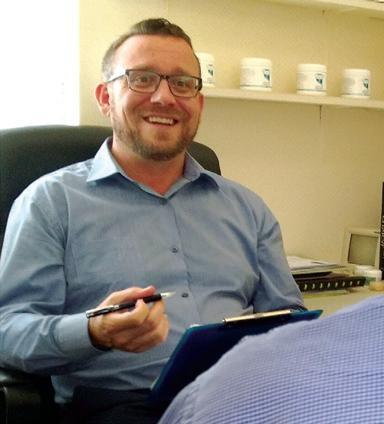
Light rail’s final coup de grâce
THE article by Jon Stanhope and Khalid Ahmed “The tram was a ‘solution’ looking for a problem” (CN May 11) is a forensic statistical analysis of the “justification” for spending billions of dollars on light rail after the decision to go ahead had already been made.
Mr Stanhope and Dr Ahmed’s analysis could well be a final coup de grâce.
Dr Douglas Mackenzie, Deakin
Liberal Party’s descent into irrelevance
MICHELLE Grattan’s assessment of Peter Dutton (citynews.com.au, May 12) is pertinent.
His response to the budget confirms the Liberal Party’s descent, begun by Tony Abbott, into irrelevance.
A continuation could accelerate the adoption by the Albanese government of policies necessary for the transition to a low-carbon economy and that address housing inequality and the needs of the disabled, the aged, the sick, refugees and the indigenous. Peter, keep up the populist and nearbrainless approach.
“Yes, and how many times can a man turn his head
And pretend that he just doesn’t see?...
And how many ears must one man have Before he can hear people cry?”
–Bob Dylan
Mike Quirk, Garran
16 CityNews May 25-31, 2023 We can provide a safe and effective treatment for: • Recurring cold or fever • Ear Nose and Throat • Sinusitis • Hayfever • Allergies • Autoimmune disease • Crohn’s Disease and Ulcerative Colitis • Rheumatoid Arthritis • Skin problems WE DO TELEPHONE, SKYPE AND VIDEO CONSULTATIONS Eliminate illness: address the underlying cause of your poor health, not just the symptoms SUFFERING FROM IMMUNE SYSTEM DYSFUNCTION? 49 Jardine Street, Kingston | kingstonnaturaltherapies.com.au | Phone 6295 6660 Luke Clews Kingston Natural Therapies OVER 35 YEARS OF HELPING CANBERRA FEEL BETTER SAFE • NON-INVASIVE • EFFECTIVE LETTERS Let loose to: editor@citynews.com.au
dose of dorin
Discover the story of Canberra – the people, places and history that make up this city and region. Canberra is a young city on ancient country – a place where nationhood found a home. Selected as Australia’s National Capital in 1909, Canberra’s history has a much older history and it continues to evolve to embrace new narratives of belonging and expressions of identity through its communities and places.

Share the stories of the people who have always been on this country and those who have come to make their lives here. Journey through these changes in this new major exhibition drawn from Canberra Museum and Gallery’s collection with moving images from the National Film and Sound Archives.
CANBERRA MUSEUM AND GALLERY
Cnr London Circuit and Civic Square, Canberra City 02 6207 3968 cmag.com.au
Mon–Fri 10am–4pm Café open 8.30am–3pm Sat–Sun 12–4pm Café open 12–4pm
Studio Anna Ceramics, c.1960–1970
Exploring Belconnen’s bustling business scene advertising feature BRILLIANT BELCONNEN
THE district of Belconnen is one of the original 18 districts of the ACT, and today, some 56 years after it began development, remains one of Canberra’s most populated.
With more than 100,000 residents, the area has become home to one of the capital’s most thriving business scenes.
This week “CityNews” heads northside to chat with the Belco businesses proud to share their skills and services.
Feel safe and supported in everyday life
ARTHRITIS ACT is continually working on improving services and access to much needed support for pain and debilitating fatigue in the Belconnen area, says CEO Rebecca Davey.

“Our main office has a team of exercise physiologists who undertake a wide range of exercise programs specially designed for people with any chronic pain conditions,” she says.
“These programs include the popular strength and balance program, designed to assist you to reduce the likelihood of having a fall that may cause injury.
“Our tai chi for falls prevention, and programs such as chair yoga and pilates for people with chronic pain conditions, assist those concerned about their falls risk to feel safer in their everyday lives.”
Rebecca says Arthritis ACT has recently welcomed a new physio, Emil, who has a special interest in assisting those with neurological conditions, including people who may be recovering from strokes or living with conditions such as Parkinson’s Disease, as well as anyone, including sports people, with injuries and/or surgical rehabilitation needs.
“Arthritis, Pain Support and ME/CFS ACT is a membership organisation which provides a suite of allied health and exercise classes, and run free, regular education and information
Quality aged-care services since 1992
VILLAGGIO Sant’ Antonio was established by the Italian community for older Australian Italians to maintain links with the Italian community, says general manager Katrina Cubit.
“Now nearly 40 years on from initial inception, Villaggio welcomes all cultures and nationalities,” she says.
proportioned single ensuite rooms.


“The facility offers a chapel and hairdressing salon, and our lovely hairdresser ensures each resident looks their best for regular events catered for by our onsite kitchens delivering fresh and tasty meals,” she says.
live your best life.”
Arthritis ACT, Building 18/170 Haydon Drive, Bruce. Call 1800 011041, or visit arthritisact.org.au
Villaggio Sant’ Antonio - Independent Living Units

Respite and Permanent Residential Aged Care


“The board of directors, chaired by Mr Dominic De Marco, works closely with the management team to continuously improve the quality of care and services delivered to permanent and respite residents living both in the residential aged care facilities and in the 60 independent living units.”
Katrina says the facility, located close to Belconnen shops, is set among beautiful, landscaped gardens and boasts a contemporary new wing with 29 generously
“Villaggio has two buses to offer planned outings to places of interest throughout the Canberra region. Residents enjoy the services of 24-hour registered nurses, a qualified team of care staff plus physiotherapists, a dietitian, speech therapist and podiatrist.

“Everything we do is driven by our universal mission to enhance the lives of ageing adults and their families.”
Villaggio Sant’ Antonio, 35 Burkitt Street, Page. Call 6255 1794, or visit villaggio.com.au
Our residential care will enable you to enjoy a relaxed and caring community environment with 24hr care. Located within a beautiful garden setting in Page, Villaggio Sant’ Antonio offers safe and secure living in both our Aged Care Facility and our Independent Living Retirement Villas. For all enquires please contact us on 62551794 or reception@villaggio.com.au

18 CityNews May 25-31, 2023
www.villaggio.com.au
BRUCE PAGE
CEO Rebecca Davey.
Our physiotherapists work closely with our exercise physiologists and excercise scientists so if you need hydrotherapy or other exercise supports, you can keep your care all in the hands of one practice.

Linda Clee – Physiotherapist


Linda is an experienced physiotherapist having worked clinically in private practice for over 20 years, in rehabilitation settings and in community based aged care. Having owned and operated her own clinic for over 10 years, Linda offered a range of different therapy options, and has refined her skills and service offerings to ensure a functional focus to therapy; that is holistic and promotes overall wellness. A dancer in a past life, Linda loves to add a bit of fun in her programs, often throwing in rhythm and co-ordination challenges that are good for the body and the mind.
• Management of Osteoarthritis
• Falls recovery programs

• Mindfulness for chronic pain management
• Sports Injury prevention and treatment
• GLAD Program for Hip and Knee Osteoarthritis
• Strength and balance for Falls Prevention
Jacqui Couldrick – Physiotherapist
Jacqui has a particular interest in hip and knee osteoarthritis.
Jacqui delivers the GLAD program designed to reduce the need for joint replacements, or if a joint replacement is unavoidable, to prepare you thoroughly for surgery and recovery for day to day tasks. Jacqui is studying towards a PhD in the outcomes of the GLAD program.
Emil Terbio - Physiotherapist
Emil has come to Arthritis ACT highly recommended by clients he has worked with previously.


With experience in the hospital system and private practice, Emil has interests in neurology, chronic pain and sports injury management and prevention.
Emil is soccer fan and assists local clubs in his spare time on weekends.
NEED SUPPORT WITH MANAGING YOUR PAIN, INJURY OR WANT SUPPORT TO AVOID INJURY? www.arthritisact.org.au | e: info@arthritisact.org.au “You do not need to have any particular condition to utilise our services, just a desire to ‘Build a Better You.’ Call us today on 1800 011 041 to book an appointment with a physiotherapist
team of physiotherapists can meet all your physiotherapy needs including:
Our
HAWKER
Friendly, comprehensive pilates studio
JORDANA Martin opened Feel Better Pilates in late October, but has been teaching pilates for seven years.
“I live in Belconnen so having the studio in Hawker is very practical, but it also has the space for what I offer, is central and has plenty of free parking,” she says.

“Feel Better Pilates offers small group classes for mat, reformer and tower pilates. I’m trained in comprehensive pilates, and while reformer has its place, it was important for me to offer more than that. Most studios don’t offer tower pilates and I wanted it to be accessible, not just private sessions.
“It is also very important to me that I know everyone’s names, and know about their previous injuries so that I can tailor the session accordingly. We keep our classes smaller so that you won’t get lost in the crowd.”
Jordana currently has an intro offer of $60 for six classes

“It’s about making a connection, and it brings the most joy to my life to be able to welcome and help others. It lights my soul on fire.”
Feel Better Pilates, Shop 2, 72-74 Hawker Place, Hawker. Call 0402 723207 or visit feelbetterpilates.com.au

A Pilates studio with you in mind

Pupcakes to brighten a pooch’s day
OWNED and run by father and daughter David and Ashlinn Reid, there are years of hospitality experience backing Stella’s By The Lake.
David and Ashlinn say Stella’s provides a friendly and warm cafe experience where everyone is welcome.
The cafe in Belconnen is offering pupcakes for $5.90 that have become very popular amongst pooches that visit the cafe, as well as mimosas for their owners and taco spiced corn fritters.

“We’re dog friendly, and we have a lovely, nice grass space across from Lake Ginninderra,” says Ashlinn.
“We also offer kids milkshakes and juices, baby chinos and a variety of cakes and ice creams.”
David says Stella’s focus is on simple but good food, and creating a relaxed and happy atmosphere.
“Stella’s is making a great name for itself with locals, shoppers, families, office workers and, of course, lake walkers who enjoy the all-day breakfast and lunch menu options, coffee and drinks that also include alcoholic beverages and sweet treats.”
Stella’s By The Lake, 63/1 Beissel Street, Belconnen. Call 6253 0370.
ZEST DANCE FOR WELLBEING

Movement classes designed for adults who want to keep their body and brain active and healthy, regardless of their mobility, skill or age.
Classes start by sitting on a chair, with options to stand and travel if comfortable.
No partner needed, no previous dance experience necessary.
Some classes are tailored especially for people living with Parkinson’s.

For current class information, locations, times and cost, go online to:


20 CityNews May 25-31, 2023 Smaller class sizes so you don’t get lost in the crowd Offering reformer, mat and tower classes. Canberra’s ONLY group tower offering Simple weekly memberships with one price to access all class types Classes offered 7 days a week
Scan to BOOK NOW! Shop 2, 72-74 Hawker Pl, Hawker Shops feelbetterpilates.com.au GET IN TOUCH TO FEEL BETTER hello@feelbetterpilates.com.au 0402 723 207 INTRO OFFER 6 CLASSES for $60
BRILLIANT BELCONNEN
Feel Better Pilates teacher and owner Jordana Martin.
BELCONNEN
zestdwb.blogspot.com Email ZestDWB@gmail.com Phone 0417 417 182
MACGREGOR
New owner puts design study to practice in blooms


EIGHT Stems is a florist in Macgregor that has been open for seven years, but Sanela Khan and her partner took over the business two months ago.

“I was studying art and design, and so my partner bought me the business so that I could use and grow my skills and creativity,” says Sanela.
“We offer fresh florals, everlasting florals, curated gifts, and bouquets and flowers for any special occasion.”

For an extra special treat, Eight Stems offers bouquets with additional candles, chocolate bars from Lemon and Myrtle, and/or local wines, including from Nick O’Leary, Mount Majura, Lark Hill, Clonakilla and Lerida Estate, with a choice for red or white at the checkout.
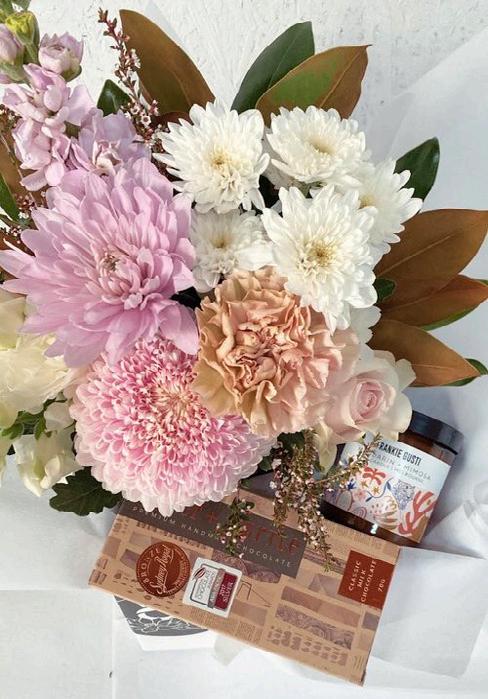


“And, we offer same-day delivery for $15, Monday to Friday, but orders need to be placed by 1pm,” says Sanela.

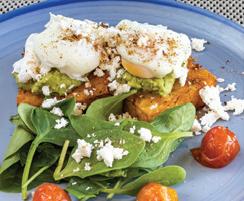



“Our beautiful fresh floral arrangements are all designed and made to order, and we have a wide selection of seasonal flowers sourced from a range of local and international growers.

“Or bring a smile to a loved one’s face with our blooming selection of bouquets made especially for them.”
Eight Stems, call 0468 358338, or visit eightstems.com.au
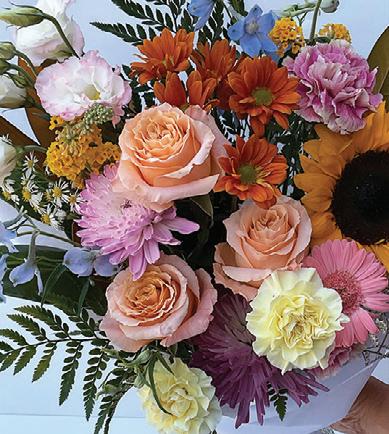
CityNews May 25-31, 2023 21 Stella s BY THE LAKE www.stellasbythelake.com.au Beissel St Belconnen Come & Enjoy a delicious meal with Family & Friends Phone 6253 0370 (Bookings required on weekends) 1 Beissel St, Belconnen (near Badenoch Real Estate) “Canberra’s Dog Friendly Cafe” Alfresco dining for dogs Peanut butter bacon donuts, peanut butter paws/bones & puppacinos Early bird deal WEEKDAYS ONLY 7am - 9am 10% OFF ( For a limited time ONLY) NEED FRESH FLORALS FOR YOUR BIG EVENT? We cater for weddings and other large events Curated gifts Everlasting florals Floral wreaths and more! SAME DAY DELIVERY AVAILABLE Monday to Saturday* *Orders must be in by 1pm Your local Belco florist Mon to Fri 8:00am - 3:00pm Sat 9:00am - 1:00pm Sun & Public Holidays, closed SCAN TO VIEW OUR SELECTION VISIT US at eightstems.com.au Or CALL US on 0468 358 338 Facebook rating of 4.9 stars Just $7 delivery for Belconnen region! advertising feature
Gift shop that highlights all that Australia offers
WOMBAT Cards and Gifts is a small family business started by Monica and John Rolls in 2015.
“We started as a small market stall selling homemade greeting cards that I started making when I retired,” says Monica.
“But we stopped doing markets during the COVID-19 lockdown.”
And, while Monica says she loved that markets gave her a chance to see more of Australia, and she loved meeting all the interesting people along the way, it was time to put down some roots closer to home, and opened the Wombat Cards and Gifts store front in Belconnen.
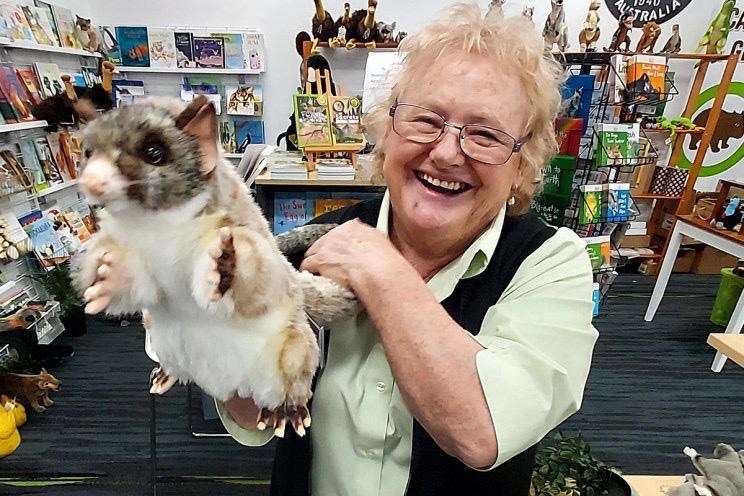
“We offer cards, children’s books, puppets and plush animals, coasters and gifts,” says Monica.
“My husband, John, wanted to do metal art, too, and it took off.
“I love what I’m doing and I love that I’m achieving something by introducing people to our Australian animals.
“I love the Australian animals, I just think they’re so unique and I love expressing my joy through the store. It makes me feel happy when people come in and see the products that we have.
“We’re offering 10 per cent to 30 per cent off selected floorstock.”
Wombat Cards and Gifts, Shop 2 31/35 Nettlefold Street, Belconnen. Call 0423 786222, or visit wombatcardsandgifts.com.au
BELCONNEN
Family business working with love, for clients
INSTANT Colour Press (ICP) was established in 1982 by Warren Block, run alongside his partner David McInnes, says joint owner and son, Richard Block.



“Myself and my sister joined my father in the family business at the beginning of this year,” he says.
“I initially started helping the business just to offer some more support, but I ended up enjoying the work.
“We are the only printing business in the Belconnen area, and we always have been.”

Richard says ICP offers printing of “pretty much anything”, including business cards, books, corflutes and now, for kids birthday parties, they can print and cut out cartoon characters.
“We have just made an exciting major investment in new equipment, allowing us to do high speed large format printing and cutting, with a Mimaki JFX200-2513 EX Flatbed printer and Mimaki CF22-1220 RC-5 Flatbed cutter,” says Richard.
“We are only the second printing business in Canberra to have a cutter.

“Together, we as a family have a terrific and professional business relationship, because we’ve worked together before in a publishing business, which is how ICP was founded.
“We love doing what we do, serving clients and helping to make their projects look their best.”
ICP, 21 Rae Street, Belconnen. Call 6253 1866, or visit instantcolourpress.com.au

22 CityNews May 25-31, 2023 BRILLIANT BELCONNEN advertising feature
BELCONNEN
ICP joint owner Richard Block.
Wombat Cards and Gifts owner Monica Rolls.









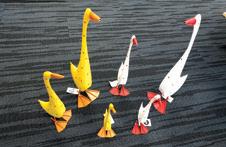
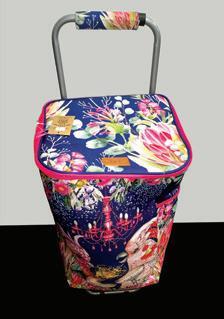

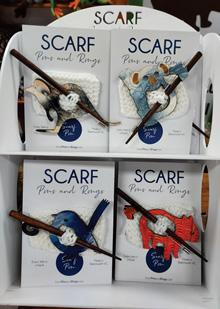



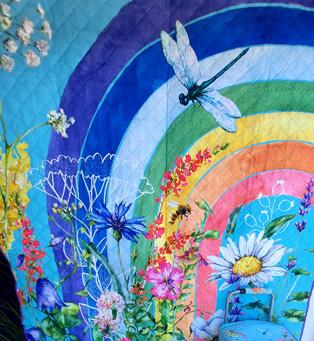





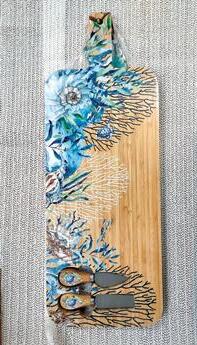

Come & grab a fantastic gift at Wombat Cards & Gifts Shop online at wombatcardsandgifts.com.au Open Tuesday to Friday 9am-4.30pm Saturday 9am-3pm Unit 2, 31-35 Nettlefold Street, Belconnen (opposite Bean Origin Cafe) Phone 0423 786 222
Scarf Pins & Rings
Shopping Carts by Lisa Pollock Mugs & Drink Bottles
Garden Metal Art
Metal Peacocks Keepsakes for Mum or Nanna
Metal Ducks for Home & Garden
Beautiful Cards – Birds & Flora
Coasters & Placemats
Native Animal Kitchenware Colourful Quilts Glasses Cases & Travel Items Pot Stakes Grazing & Cheese Boards by Lisa Pollock CHECK THIS OUT - 10% TO 30% OFF SELECTED FLOORSTOCK * *Not all items shown are discounted
Picnic Table by Lisa Pollock
WEETANGERA HAWKER
Bookkeepers making sense of Uber issues
JOHN Scarano, of JS Bookkeeping and Accounting Services, has been asking some of his Uber-driving clients: “Is it still worthwhile?”

“We look after a few clients that drive Uber cars and over the last four years there’s been a number of tax office discussions with Uber,” he says.
“If they’re not up-to-date with the current changes they could be over-claiming GST or not transmitting enough GST to the tax office.
“If they don’t get proper advice the tax office always tends to do audits on not just Uber drivers but also people in the transport industry.
they can and can’t claim and we’re happy to assist
Beauty services for all walks of life
A COMMITMENT to real results is what keeps The Aesthetic Emporium CEO, Steffanie, passionate about her work.
“It’s a passion driven by educating my clients, debunking beauty myths, and really concentrating on individual needs and concerns in a professional and authentic manner,” she says.
“We officially opened our doors at Weetangera on Valentine’s Day.
“We have free parking right out front, and we’re only seven minutes from Belconnen Mall and 12 minutes from Civic, so it’s super central but away from the chaos and traffic.”
Steffanie says her expertise and education is derived from great teachers in the industry, being based in Melbourne working alongside dermal clinicians, nurses, doctors and surgeons.
“I have been fortunate enough to be exposed to
advanced, non-invasive cosmetic treatments and innovative services and technology in a skin space,” she says.
“We offer all of the standard beauty and aesthetic treatments, including rosacea, non-surgical face lift, melasma, acne scarring, burns, skin tags, moles and tattoo removal.
“We are about to launch new treatments, including one treatment no one in Canberra is offering.
“We are very excited about it – these services are for all walks of life. Everyone is accepted into our clinic with a warm welcome.
“We offer quality not quantity. We have a wide range of cosmeceutical products in stock, as well as gifts, with an online store being built as we speak.”
The Aesthetic Emporium, 3/16 Weetangera Place, Weetangera. Call 6183 0456, or visit theaestheticemporium.com


FACIAL $99
• 1 hour luxury treatment.
• Introductory facial includes skin consultation.


• A deep cleansing treatment penetrates deep into the pores to clear congestion.
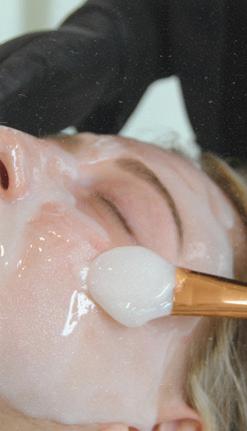
• Completely tailored to your skin concern.
• Help combat excessive oiliness, mattify the complexion minimise future skin breakouts.
• Finally, a complimentary mask to rejuvinate your winter skin.
For Bookings 02 6183 0456 Or visit theaestheticemporium.com
•
•
them with questions.”
But John, who has been an accountant for more than 35 years, doesn’t just work with Uber drivers and says he particularly enjoys working with small businesses.
“I enjoy helping them start up correctly, choose the right business structure and I enjoy assisting them in deciding which accounting software they can or should use,” he says.
“And I make sure I talk at their level to make things easier.”
24 CityNews May 25-31, 2023
INTRODUCTORY
theaestheticemporium Weetangera Shops BRILLIANT BELCONNEN advertising feature • Accounting
Individual and Business income tax returns
MYOB setup, training and support
BAS and IAS lodgment
•
•
•
Bookkeeping
Call JOHN SCARANO on 02 6255 3555 Registered Tax agent accounts@jsbookkeeping.net.au “We’ll look after your compliance work so you can work on what you do best – your business!” J O HN SCARANO R E GI STE R E D T AX AG EN T M OB IL E 0 4 0 7 254 21 0 E MA I L A C COU N TS@JSB O OKKEEP I NG .N E T A U JS BO O K K EEPI N G & ACCO U NT I N G SERVI CES P T Y LT D J O HN SCARANO R E GI STE R E D T AX AG EN T M OB IL E 0 4 0 7 254 21 0 E MA I L A C COU N TS@JSB O OKKEEP I NG .N E T A U JS BO O K K EEPI N G & ACCO U N T I N G S ERVI CES P T Y LT D J O HN SCARANO R E GI STE R E D T AX AG EN T M OB IL E 0 4 0 7 254 21 0 E MA I L A C COU N TS@JSB O OKKEEP I NG .N E T A U JS BO O K K EEPI N G & ACCO U NTI N G SERVI CES P T Y LTD
Maintain ASIC company records After hours appointments available by arrangement.
John Scarano of JS Bookkeeping and Accounting Services.
ARTS & ENTERTAINMENT



Posters tell the stories of excluded Australians
By Helen MUSA
THE National Museum of Australia is exploring what it means to be “Aussie” in a new poster exhibition.

“Aussie Posters”, a new exhibition show casing the work of artist Peter Drew, looks at diversity and exclusion through a series of posters that feature archival photographs of individuals who applied last century for exemption from the then Australian govern ment’s notorious dictation test.

That’s the one where under the tion Restriction Act, applicants had to write 50 words in a language of the immigration officer’s choice, which could be given in any European language. If they failed, they could be deported. It was a cruel, cynical joke perpetrated on generations of would-be immigrants, most of the “wrong” colour.
Drew has taken archival images in the National Archives and created street art posters by overlaying them with the word “AUSSIE”. He has been displaying his posters on the walls of Australian cities and towns since 2016, inviting passers-by to look them in the eye to discover the stories behind the faces of non-British migrants entering

The individuals featured in the posters were Australian-born or had lived here for many years. To travel overseas and not be subject to the dictation test upon their return, they had to apply for an exemption or else face having their re-entry rejected.
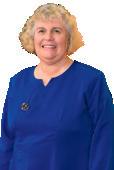
Drew says his posters respond to rising

public culture. While most of those on the posters got the exemption and eventually returned to Australia, some did not, such as 22-year-old Kanichi Shiosaki, born on Thursday Island in Queensland, who sought exemption from the dictation test in 1931 so he could travel to
Japan. His return to Australia was not recorded. Another, Bejah Dervish came to Australia to work as a cameleer, having been born in Baluchistan, now in Pakistan. In 1896 he managed the camels used for transport on the gruelling Calvert Scientific Expedition to the Great Sandy Desert of north-central WA. After, Bejah settled in Marree, a railhead
near Lake Eyre in SA with a large cameleer community and Australia’s first mosque. In 1930 Bejah retired to grow date palms. He died in 1957.
Gum Yook Lee travelled with her infant son Charlie to China from Cairns, Queensland, in 1922. They returned five months later. Charlie had been born in Cairns, his mother in Brocks Creek, NT. On the exemption application, Charlie left his tiny handprint, his mother her thumbprints.
Muslim hawker Monga Khan, who arrived in Victoria in 1895, travelled around Melbourne, Ballarat, Beaufort and Ararat selling local and imported goods. In 1916, aged 46 years and in poor health, he applied for exemption from the dictation test so he could visit his family in British India (presentday Pakistan). Supporters vouched that Khan was “honest and industrious, sober and most respectful”. The exemption was granted, allowing him to return to Australia and continue his business. He died in Ararat in 1930.
“I like exhibiting art on the street because public space is a great equaliser, an ancient forum, and it allows people to connect in a very raw way,” Drew says.

“When we gaze upon the other and feel their gaze returned, we recognise oneself within the other and, for a moment, all boundaries dissolve. That’s my aim.”
“Aussie Posters”, Mezzanine Gallery, National Museum of Australia until August 27.
CityNews May 25-31, 2023 25 Garry
Everything Theatre is dying. Garry is our only hope. 3 June 2023 MILKE PRESENTS Proudly sponsored by
Starr Performs
INSIDE A spot of lunch with Patricia, oh, and the editor RICHARD CALVER
Peter Drew with his poster of Queensland-born Kanichi Shiosaki, who sought exemption from the dictation test in 1931 so he could travel to Japan. His return to Australia was not recorded.
Cameleer Bejah Dervish who, in 1896, managed the camels on an expedition to the Great Sandy Desert of WA.
Production values run deep in underground ‘Silo’ STREAMING
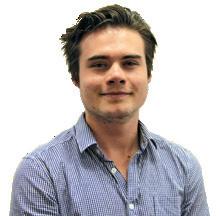
EVERY day Apple reportedly sells around half a million iPhones.
Breaking down the maths, that comes out at dozens of the devices moved every minute.
Given this rather lucrative operation it has going on, it’s no surprise the films and TV shows produced for its streaming platform, Apple TV+, have come to feature visual effects budgets of bombastic quality and realism.
Take last year’s space opera epic “Foundation”, which included interstellar battles big enough to rival those in “Star Wars”.
That’s just the start. From Tom Hanks-led war epic “Greyhound” to the star-studded line up of “The Morning Show”, with this kind of money at its disposal, Apple has been able to green-light blockbuster productions.
Indeed, Apple TV+ has been a lesser known player in the streaming wars so far, but if it trumps other platforms on one thing, it’s certainly production value and there’s no exception with its latest sci-fi epic “Silo”.
Set in an unknown era of humanity’s future, this show tells the story of a colony who live inside a gigantic silo that stretches hundreds of metres down beneath the earth.
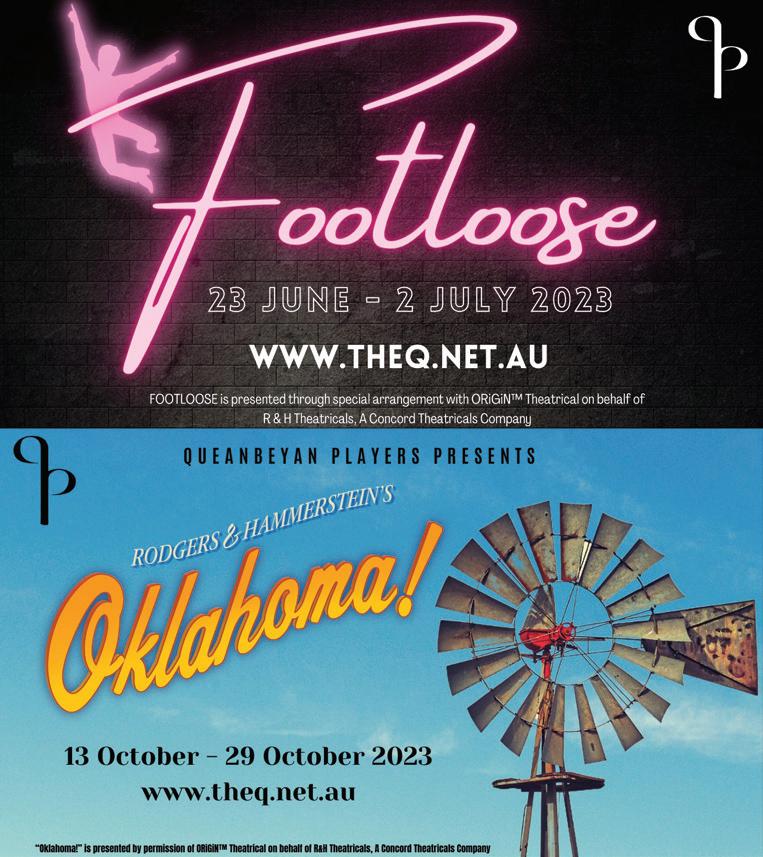
Why? Well that’s not revealed just yet, of course.
The people who live in this eerie settlement must abide by strange rules they believe are there to protect them. However, the audience is pretty quick to clue on to the fact there’s something more sinister afoot.
In the show’s opening minutes a couple stare excitedly at an intriguingly retro-looking computer screen, one with a notification
slow to get off the mark, but with a bit of patience many viewers will find themselves easily falling deeper into this absorbing, postapocalyptic mystery. Yep, lock a few thousand people inside a big, dystopian cylinder and rattle it around and it makes for quite the dramatic melting pot.
IMAGINE a move overseas that cost less than 20 bucks.
For many British people living 70 years ago, that seemingly impossible offer was a reality. In 1956 newspapers throughout the
the country’s population and workforce.
Around one million people jumped at the promise of a fresh and cheap start, earning themselves the nickname “Ten Pound Poms” – also the name of a new drama series on Stan that aims to tell their story.
It’s mainly revealed through the eyes of British everyman Terry (Warren Brown), a gambler and drinker from Stockport who also suffers from PTSD caused by his time as a prisoner of war. In other words, the perfect candidate for a new beginning.
But as the famous saying goes, if it’s too
reset he and his family hoped for. Instead, they arrive in a country that’s depicted as unwelcoming, hostile and racist. The locals are sick of the “whinging poms” and life, it seems, isn’t much better than what he tried to escape from.
The writing here isn’t exactly top-shelf stuff, but “Ten Pound Poms” still manages
to squeeze out enough interesting historical context to warrant a try, if audiences can get past a rather unflattering view of down under.

IN the age of streaming not a month goes by without a remake of something popular.
This time it’s “Fatal Attraction” that’s getting the modern makeover in the form of a new TV series on Paramount Plus.
The reimagining of the 1987 thriller largely adopts the same premise, depicting the fury of a woman scorned (I hear hell has none like it).
American actress Lizzy Caplan plays Alex Forrest (originally portrayed by Glenn Close), who becomes obsessed with a married lawyer after she has an affair with him.
Her descent into crazed jealousy results in a dangerous campaign to bring him undone.
While the extremes of that campaign gave audiences quite the scare in the ‘80s, in today’s era of television where every show is competing for attention and shock value is going off the shelves, this new series can’t quite live up to the thrills instilled by its predecessor.
Boiling bunnies, it seems, just doesn’t quite cut it anymore.
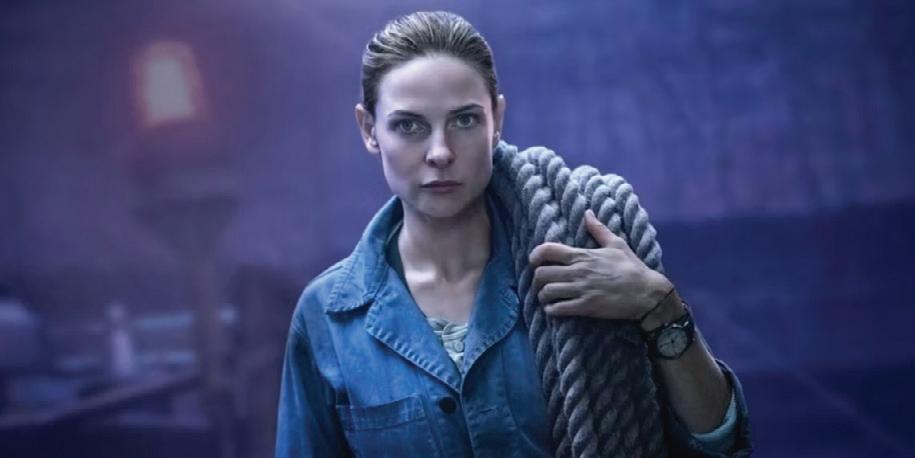
26 CityNews May 25-31, 2023
Rebecca Ferguson in “Silo”... it tells the story of a colony who live inside a gigantic silo that stretches hundreds of metres down beneath the earth.
Busiest baton on a global swing
By Helen Musa
WE’VE been reporting on Canberra’s busiest conductor, Leonard “Lenny” Weiss, since he was a whippersnapper, and he’s showing no sign of slowing down.
This, after all, is the man who once simultane ously conducted the Canberra Youth Orchestra, the National Capital Orchestra, the Canberra Qwire and the ANU Choral Society and his charac teristic mode is busy, busy, busy.
As he was finishing a conducting stint with National Opera’s “The Elixir of Love”, Weiss announced his imminent departure the following day on the long-postponed 2020 Mr and Mrs Gerald Frank New Churchill Fellowship.
The preceding weeks in Canberra had gone well as he reunited with the orchestra he had founded, the Canberra Sinfonia, to play the opera and enjoyed rehearsing with local singers. His tenure as NZ’s national assistant conductor-in-residence, managed by the Auckland Philharmonia Orchestra, had come to an end after recording some new music for the SOUNZ Centre for NZ Music and even singing in Beethoven’s “9th Symphony” under the baton of Giordano Bellincampi.
After a quick dash through Sydney, he was off to Perth for the Australian Conducting Academy, working with Israeli conductor and pianist Asher Fisch and the WA Symphony Orchestra on Elgar’s “Enigma Variations” and operatic arias from Mozart, Strauss and Massenet featuring WA mezzo-opera Ashlyn Tymms.
Perth was the perfect point to fly directly to Tokyo to work with Riccardo Muti at the Italian Opera Academy. Every day for the better part of two weeks he got an hour of orchestral podium time with Muti by his side, an experience that scored a rave review from Weiss: “It would be an understatement to say that furthering my technique, knowledge of opera, and learning the
inner works of Verdi’s masterpiece ‘Un Ballo in Maschera’ with Muti was simply inspiring… this may have been the most artistically energising and motivating time of my career to date.”
The Opera Academy culminated in a final performance of “Un Ballo” for which Weiss conducted from the Act II love scene through to the Act III arias “Morrò, ma prima in grazia” and “Eri tu”.
Back home, he focused on “The Elixir of Love”, but not before popping in on the Four Winds Music Festival with his mum over Easter, where I asked him whatever happened to his masters at the Peabody Institute of Johns Hopkins University in Baltimore, where in 2020 Weiss had received Peabody’s Rising Star award?
ARTS IN THE CITY
While there, covid struck so he called a pause and slipped back into Canberra with the initial idea of resuming his studies later.

The Churchill Fellowship will see him travel throughout Europe and the US for the next three months, assisting and observing leading international conductors, including Marin Alsop and the Chicago Symphony Orchestra at the Ravinia Festival, Yannick Nézet-Séguin for a Met Orchestra performance at Carnegie Hall and Simone Young at the Berlin Philharmonic. Busy, busy, busy.
On his return he will work with the Melbourne Symphony Orchestra before returning to Europe – Weiss has been selected into the Kodaly Conducting competition in Hungary.

Yothu Yindi headlines reconciliation concert
LEGENDARY band Yothu Yindi will headline this year’s reconciliation concert. They’ll be sharing the stage with host Tahalianna SowardMahanga and young Canberran First Nations artists Alinta Barlow and Stewart Barton. Canberra Theatre, 7pm, May 28.

WORLD Crafts Council Asia Pacific has announced the 10 nominees from the South Pacific region for the Asia Pacific Region Craft Master program, which recognises and honour s masters in their chosen craft form. Of the nominees, three – Greg Daly, Jennifer Kemarre Martiniello and Kirstie Rea – are well-known identities in the Canberra arts scene.
FOUR Winds in Bermagui has announced that its co-executive directors, Gabrielle Waters and Greg Lissaman, and artistic director Matthew Hoy have all stepped down at their own request. Waters and Hoy pulled the company through the worst of the covid crisis. A new executive director will be announced in “the fairly near future”.
LUMINESCENCE Chamber Singers and Luminescence Children’s Choir join forces with Canberra-raised pia -
The reconciliation concert line-up. nist and composer Sally Whitwell to perform her song cycle “Pictures at an exHERbition”. That’s a play on the title of Mussorgsky’s “Pictures at an Exhibition” and is Whitwell’s attempt at rebalancing the history books using works by Australian women artists such as Grace CossingtonSmith, Thea Proctor and Katy B Plummer. Gandel Hall, National Gallery, 2pm, May 28.
SYDNEY Writers’ Festival will livestream its headline events to Woden Library, May 25- 28, Dickson Library on May 26 and 28, and



Gungahlin Library, May 25-27. Brought to Canberra in real time, Jane Harper will talk about her new crime novel, “Exiles”, while Booker Prize-winning author Eleanor Catton will discuss her new thriller “Birnam Wood”.
Audiences are invited to participate in live Q&A sessions.
TUGGERANONG Arts Centre has two quick-response grants now
Restorations - Repairs - Remakes - Re-Setting Ring Re-sizing - 48hr Service Custom Design - for something Special Pearl and Bead Re-Threading and Knotting
Advance Jewellers
A Family Business: 55 years experience Southlands Shopping Centre – Mawson

10am to 4pm
Open: Tues, Wed, Thurs, Fri. 0408 310 063
Your Precious ‘Old’ Jewellery - well it used to be... now maybe... It’s just old - and a bit worn out, or costs too much to fix... probably never be worn again... You keep the memories - perhaps, we could buy the goods?
WE UPHOLSTER COMMERCIAL & RESIDENTIAL FURNITURE

- RE-UPHOLSTERY & REPAIRS

- FABRIC PROTECTION
- WALL UPHOLSTERY
- CHAIRS
- OTTOMANS
- SOFAS

- BED HEADS TWINSTITCHUPHOLSTERY.COM.AU
twinstitch.upholstery Like us on Facebook Call or email us today! 0422 073 665 61813511 toni@twinstitchupholstery.com.au



open to southside artists. One is a call-out to be part of Tuggeranong Arts Centre’s 2024 exhibition program and the second is an invitation to apply for the Woden Micro Residencies Program, a twoweek residency in Lovett Tower. Expressions of interest to caroline. downer@tuggeranongarts.com by May 30.
THE Friends of Chopin Australia are hosting Alexander Yau on piano and Rachel Siu on cello performing Chopin’s music. The theme is “Chopin in Transcription”, and Yau was winner of the Sonata/Preludes Prize at the third Australian International Chopin Piano Competition in 2017, while cellist Siu is on the faculty of the Sydney Conservatorium. All Saints Church, Ainslie, 3pm, May 28.
Belconnen
Opens
CityNews May 25-31, 2023 27
BESPOKE MANUFACTURING SERVICE
Community Theatre
this week and
Fri 7.30pm. Sat 2
7.30pm. Sun 4pm. Mon 2pm
Canberraticketing.com.au
62752700. Tickets also at the door A Tempo Theatre production. Tempotheatre.org.au
of the Month
A
CONVERSION SERVICE – VINYL, SLIDES & ALL VIDEOS TO DIGITAL TREASURE YOUR FAMILY MEMORIES OPEN 7 DAYS • 6293 4677 songland.com.au Cooleman Court, Weston Creek
runs all weekend
&
Bookings:
Phone
Book
By Basil Thomas
jolly English comedy
Conductor Leonard Weiss… busy, busy, busy.
Photo: William Hall
MUSIC
Cash-strapped opera sings for supper
OPERA Australia has recorded an operating loss of half a million dollars for the 2022 financial year, saying a return to surplus could take years, reports LIZ HOBDAY.
AUSTRALIA’S largest performing arts organisation has posted another loss as it struggles with hesitant audiences and cost blowouts.
Opera Australia recorded an operating loss of $447,878 for the 2022 financial year, an improvement on the record $22.6 million loss it notched up for 2020/21 when the pandemic forced it to cancel most performances.
The company brought in $79.8 million at the box office, but staff costs for more than 1500 employees were north of $70 million, according to the figures.
It also received $37.6 million in taxpayer funding including just under $10 million from the NSW government and without that, things would have looked much worse.
With more losses predicted for 2023 it could be years before Opera Australia returns to surplus, according to chief executive Fiona Allan.
“I think it’s just not an immediate thing. I do think I can make a commitment to getting us there,” she said.
“But I don’t think this is something that’s going to happen over one year or even two.”
The 2022 result is “great” for an
organisation that’s still recovering, Allan said, as well as coping with a new set of problems.
Costs for some production materials have gone up by half, while prices for flights and accommodation are “crippling”.
“We can’t pass those costs on to the consumer because people are very price sensitive in this level of inflation,” she said.
Audiences were cautious about heading to the theatre for much of the reporting period and attendance remained volatile, with people buying tickets much later than usual.
Yet the annual report shows 627,568 people still had a taste of the opera, with 507 performances staged.
If the company can thank the taxpayers of Australia and especially NSW for making the 2022 result more palatable, it can also thank, ahem, musical theatre.
Opera Australia raised eyebrows when it programmed Andrew Lloyd Webber’s “The Phantom of the Opera” but the show broke box office records in Sydney and Melbourne with an audience of 202,000 and another 63,000 catching the version staged on Sydney Harbour.
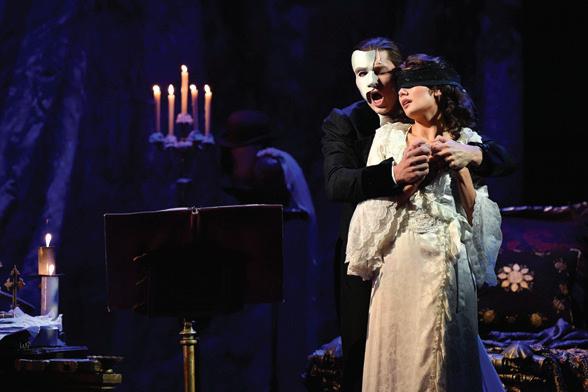
Another musical, Rodgers and Hammerstein’s “Cinderella”, was a similar success playing in Sydney, Melbourne and Brisbane to an audience of 244,000.
More musicals are an obvious fresh income stream for the national opera company, says Allan, who promises they won’t come at the expense of its opera program.
As for that, Opera Australia staged some innovative productions during 2022, with “Il Trovatore” using massive digital screens, and a production of “Carmen” shifted to Cockatoo Island and the #MeToo era.
Opera Australia ruffled feathers when the company revealed it would not stage any full productions in Melbourne during 2023, but Allan says it’s exploring more co-productions and looking at regional
WINE Spot of lunch with Patricia
By Richard CALVER
THE failure of a mate and I to assess one of the wines that Brown Brothers sent me to taste as part of the 20th release of its premium Patricia range, the 2018 Patricia Cabernet Sauvignon, did not deter.
Instead, the editor of this journal and moi consumed it over lunch at Bellucci’s in Manuka on a sunny autumn day that lifted the spirits with its gift of sunshine and quiet, still air.
venues such as Geelong.
Behind the scenes, an anonymous survey of the company’s employees that delivered a “sobering” picture of its corporate culture has resulted in measures including a 24-hour hotline for opera workers to report inappropriate behaviour, according to the annual report.
A more recent staff survey has shown some improvement, said Allan.
“We’ve invested a lot in our people in the past year and we’re trying to start to turn around a workplace culture that
to a season of stars
 By Helen Musa
By Helen Musa
THE new $20 million Snow Concert Hall has opened its doors at Canberra Grammar School.

I extended this invitation despite the admonition by Dene October, author of books about Dr Who and British rock, that: “A good editor is someone who cares a little less about the author’s needs than the reader’s.” I was sure our need of a decent red was an undisputed commonality.
The restaurant was chosen because it permits BYO, as well as being licensed, and because cabernet is a good match for Italian food.
In my opinion, tannic and fruit-forward cabernet sauvignons are a good match with any tomato-based sauces. The acidity of the wine should match the acidity of the tomatoes, so long as the cabernet has sufficient structure to take on the acidity of the pomme d’amour, literally for the French the “love apple”.
I mention the French because cabernet sauvignon originates from the Gironde in the chateau country of south-west France, where it is the major component in the highly regarded red wine of the area, claret.
The waiter poured our wine as soon as we were seated, a very good beginning because the reaction of the wine with air markedly changed its characteristics over the course of an hour.
Quite simply, when air and wine interact, two important processes occur: evaporation and oxidation. These processes often improve the quality of the wine by changing its chemistry.
In short, evaporation permits sulphites to be dissipated and for the alcohol in the wine to be less overpowering. Oxidation can add a nuttiness and enhance the fruit flavours but only in a limited time frame. Oxidation can cause wine to taste terrible after about two to three days.
Thursdays from 5.30pm •
Wednesdays from 7pm
Mondays
Phone: 0407 066 110 | Email: dale_harris@bigpond.com Web: dalesballroomdancing.com | Principal: Dale Harris

The 900+ capacity, two-floor concert hall features state-of-the-art acoustics that are already attracting musicians not just from Canberra and around Australia, but from across the world.
Funded privately by businessman, philanthropist and Canberra Grammar old boy, Terry Snow, the hall sits prominently between the traditional headmaster’s office and teachers’ quarters at the front entrance.
Australian-Argentine international flute star Ana de la Vega has been appointed artistic director not by Canberra Grammar, but by an external organisation, Snow Concert Hall Enterprises.
The coming series will comprise a set of four performances featuring luminaries such as jazz master Wynton Marsalis, pianists Piers Lane and Simon Tedeschi and violin player Daniel Röhn.
But de la Vega said “lots of other things are cooking” and that she’d be announcing further concerts at roughly six-week intervals, including an end-of-year event.
“This acoustic is outstanding, the feeling as a performer is absolutely wonderful,” de la Vega enthused.
It might be a “hall-within-a-school,” but, she said, these days great music halls are everywhere in universities and schools overseas so we can expect the Snow Concert Hall to become one of the most sought-after venues in the country.
The purple colour of the Patricia augured well for its depth, with the first sniff giving lots of blackcurrant on the nose. The first taste also saw the palate pummelled by the tannins, which showed it had sufficient structure to stand up to the bold sauce that accompanied my gnocchi, the lamb ragu with its mix of meat and tomato intensity.
We both agreed that the wine added to the richness of the food. After an hour, on consumption of the second half of the bottle, the fruit characteristics of the wine changed after air had softened the tannins and brought out greater levels of complexity.
I said: “Remarkable isn’t it how there’s now a hint of red fruit, how the initial black fruit flavours have changed.”
“Yes,” he said, “I hate to encourage you, but the fruit has changed; yes, I can almost taste raspberry.”
So, he gave me the raspberry but in the nicest possible way. He also remarked:
“This is a different experience. I wouldn’t usually pay this much attention to wine at a meal. But this one was tart at the beginning and enjoyable at the end.”
My response: at first tongue in cheek: “A little tart is often good to find.” But the serious response: it’s worthwhile shelling out $70 for a bottle of this wine because it stands a complex and well-balanced expression of cabernet sauvignon.
There are more of Richard Calver’s wine columns at citynews.com.au

28 CityNews May 25-31, 2023
MUSIC
Opera Australia posted an operating loss despite “Phantom of the Opera” breaking box office records.
Photo: Bianca De Marchi/AAP
Professional,
tuition in Ballroom Dancing
Ballroom Dancing
fun
Dale’s
All Classes are held at: The Crystal Ballroom
6/38 Reed Street Nth, Greenway, Tuggeranong
PRIVATE DANCING LESSONS
MEDAL CLASSES
Canberra
•
– Individuals or Groups – Perfect for Wedding Parties BY APPOINTMENT •
ADULT BEGINNER CLASSES
SOCIAL DANCING
•
7pm-9.30pm ENJOY YOURSELF IN A FUN AND ENVIRONMENTSOCIALRELAXED
Soaking up the rooftop vibe and amazing views
By Wendy JOHNSON



THE views from rooftop Leyla Bar, Burbury Hotel, are amazing. We lucked out with seats giving us perfect views of Parliament House. We also lucked out on a fiery red sunset.

Leyla is about a lounge experience, with a cool, contemporary fit-out. Light, bright and airy, the bar throws open its massive windows, bringing the outside in. Large, circular skylights add a touch of class.
The cocktail list is compact ($19 to $24) although no doubt Leyla would shake and stir to order. It’s great to see the beer line-up supporting local breweries such as Bentspoke and Capital. It’s also great to see Leyla offering increasingly popular Heaps Normal, a zero-alcoholic beer for $9.
Bubbles burst forth from $75 to $690 (for a 2014 Cristal Champagne from France).
Whites are $57 to $140, rosés $57 to $77 and reds start at $68 and top off at $420.

Food is designed around light bites, with some options more shareable than others.


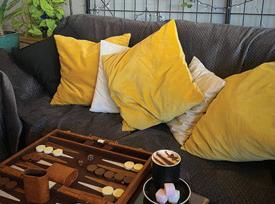
Order by QR code or, as I did, at the bar,

FABULOUS FOOD



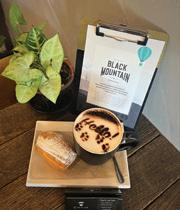

of five kinds of cheese ($20 for two, $10 for each additional), accompanied by fig roll, quince paste and baguette. We worshipped the decadent triple cream brie (Adelaide) and Manchego (Spain).
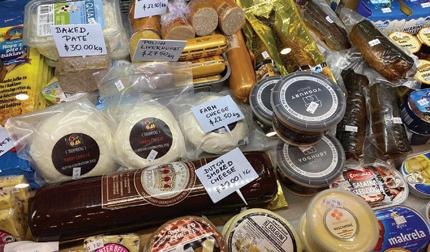
Because we were sharing, we ordered the meat platter ($26 and $10 with cheese). The flavourful and sweet Serrano ham, Salamanca chorizo and Mortadella were lovely and the tiny cornichons crunchy. Desserts include a gin and tonic cheesecake with passionfruit curd, and a Mojito mousse (both $16).

The service on our visit could have been refined. Our rose didn’t have the foil taken off properly and was plopped down with three glasses on our table before the waiter left us there to pour on our own.
which, in my mind, is more of a “lounge experience”. We didn’t pace our orders and so all food rocked out at once. Big lesson learned. The soft brioche rolls (two for $19) featured big chunks of prawn mixed with a smooth, creamy Yuzu and chive mayo. We ordered a Croque Monsieur just to try ($23),
cutting it into small pieces. Ingredients are top-notch, including Maggie Beer smoked wagyu silverside (delish), and gruyere cheese (heavenly). The Croque Monsieur was almost burnt at one end, and we agreed a healthy dose of Dijon would not have gone astray. Perfect for sharing is the house selection
Although we made it clear we were sharing, extra plates and cutlery were issues, including with the selection of meats (it’s hard to pick up slices of meat with your fingers or a fork you’ve used with another dish). It wasn’t a total drama, however, and we’ll be back to soak in more of the vibe and views.
CityNews May 25-31, 2023 29 Cap’n Joe Café is a winter wonderland of fabulous Black Mountain coffee, the best hot chocolate in town and a mouth watering all day breakfast menu. Cosy, comfy, warm, and friendly. Come join us! We proudly serve Black Mountain by Seven Miles Coffee Roasters. Welcome to Cap’n Joe Cafe. Bookings 02 6282 6828 or message us via Facebook | Open Mon – Fri 7am – 3pm Sat 8am - 2pm | 22-24 Colbee Crt, Phillip | www.capnjoe.com.au CAFE WHAT IS BAKESALE? An online marketplace where you can buy and sell baking from licensed bakers across Australia. Scan to view our amazing bakers! bakesale.com.au YOUR PLACE ON THE SOUTHSIDE FOR YOUR EUROPEAN DELI FIX! Monday to Friday 10am–5pm Open every 2nd Sat 11am–2.30pm Closed Sundays www.alphacontentaldeli.com Shop 11, Homeworld, Soward Way, Greenway 02 6170 2230
DINING / Leyla Bar, Barton
The meat platter… Serrano ham, Salamanca chorizo and Mortadella.
Vibe with a view from Leyla’s rooftop bar.
Photos: Wendy Johnson
A blooming good indoor plant
periodic turning through winter. Mowing over the leaves beforehand accelerates decomposition.
IF snow peas were planted late summer or early autumn, they should be coming into flower soon and ready to pod.
Keep the frost away from the flowers and lightly cover with cloth if needed. With enough sun and moisture, the more you pick, the more
SMALL, native strawflowers are putting on a show in my garden at the moment. They haven’t had any extra water and are doing amazingly well with growth and flowering.

They are a great, long-lasting flower in the winter garden or for a dried arrangement or a vase for the house.
conditions if growing indoors.
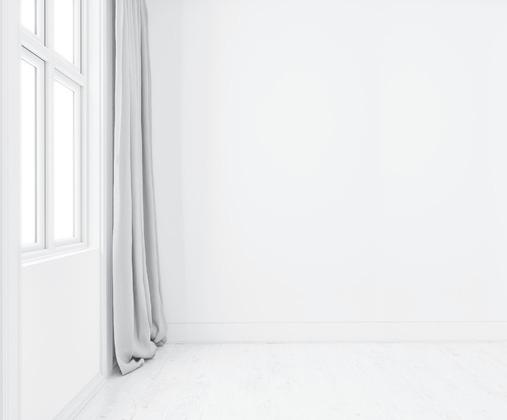
Gesneriads are from the tropics and prefer the temperature to be around 16C-24C to grow well.

Overwatering encourages pest and disease issues such as aphids, whitefly and mealy bugs, which are difficult to get rid of.
All Gesneriads need fertilising regularly to encourage continual flowering.



Sinningias have tubers and need to be planted proud of the potting media to grow successfully. The striking bright orange flowers against the textured foliage make it an interesting plant on a
A Sinningia hybrid, Gloxinia, is also an easy plant to try. It has velvety leaves and bellshaped flowers that come in many colours such as white, pink,
It has similarities to African Violets and, as a tuberous plant, will regrow from the underground tuber after flowering.
It can be discarded as an annual or potted up into a fresh new potting mix and ready for the next season. All of these species need a potting media specific for African Violets. However, ordinary potting mix can be used with some perlite and lime added to get a pH of 6.5-6.8.
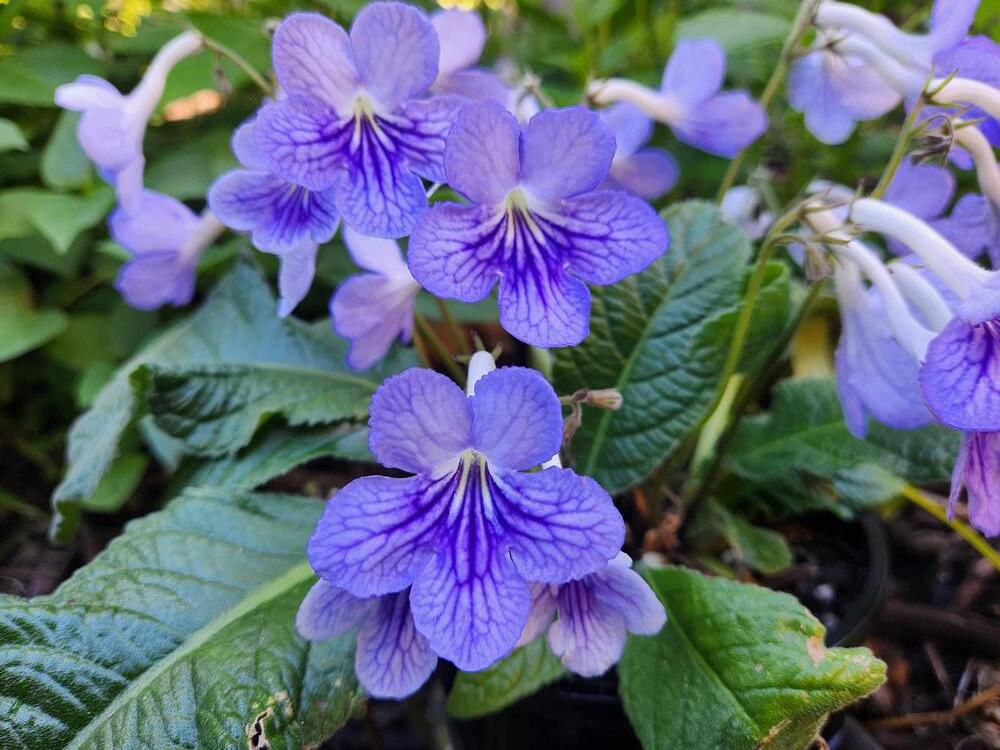
ALL fallen autumn leaves should be removed from the tops of hedges and paths.
Leaf mould is gold in the compost world and if there is open space in the garden beds, spread leaves around and sprinkle pelletised manure or blood and bone on top and water in.

Hopefully, this will deter rats and rabbits in the garden and also get the soil ready for winter and spring planting.
The larger the leaves, the longer they take to
Bracteantha bracteata “Mohave Orange” grows low as a spreading groundcover and loves full sun and neglect. Its vibrant, everlasting strawflowers grow well in a sheltered space with protection from the winds.
For a species found in the ACT, NSW and Victoria, there’s Xerochysum viscosum with lovely buttery yellow flowers.
jackwar@home.netspeed.com.au



Jottings…


• Liquid feed all leafy vegetables to keep them growing fast.
• Final pruning of evergreen hedges before the big frosts arrive.
• Sow peas and broad beans in a warm spot.
• Last chance to transplant garlic, onions, spinach and lettuce.
30 CityNews May 25-31, 2023 Text or call 0468 695 561 Email cgsact@gmail.com Find me on gumtree.com.au Insured – AAMI * $600 day rate (1 x Tree surgeon) • Tree pruning • Tree removal • Tree maintenance • Hedge lowering Chris’ Trees MAXIMUM IMPACT! ‘High stakes no mistakes’ Quote range $300 to $600* Monarch Window Cleaning 0407 263 812 / 6259 3200 monarchservices@live.com.au Average 3 BR Home Free Flyscreen & Tracks Clean Protective COVID Cleaning COMMERCIAL CLEANING QUOTES AVAILABLE $220 From PLUMBING GAS FITTING & DRAINAGE • No job is to small • Provide fast reliable service • Clear Blocked Drains | Hot water Installations & Repairs • Service & Install all Gas Appliances • All Plumbing & Gas Services • New Homes & Renovations • We care about our customers • We get it fixed right the first time PAT MORELLA | 0412 628 538 Competitive prices – No surprise fees 30 Years Servicing Canberra Lic # 1993 14963 Even the magpies think it’s real… Synthetic grass stays green all year round Australian made for Australian climate standards Family owned business - 15 years experience Easy low maintenance & water free For a FREE measure & quote call David 0410 682 457 or Nancy 0410 081 771 Keeping it green .com.au The synthetic grass solution Up to 15 years warranty from manufacture & 8 years commercial use We do Landscaping and paving too! 7 Days - Free phone quote Tony 0419 887 988 Aussie Stump Grinders www.aussiestumpgrinders.com.au SUNDAY ROAST Talking to the names making news. Sundays, 9am-noon. IAN MEIKLE ROD HENSHAW &
Streptocarpus… in the right spot, it can flower just about all year round with very little care. Photos: Jackie Warburton
GARDENING
Small native strawflowers are a great, longlasting flower in the winter garden or for a dried arrangement or a vase for the house.
HOROSCOPE PUZZLES
Your week in the stars
By Joanne Madeline Moore
29 May-4 June, 2023
ARIES (Mar 21 – Apr 20)
The Full Moon motivates you to be adventurous and dream fabulous dreams. So, this week’s stars are all about travel, exploration, education and exciting plans. With your ruler, Mars, charging through fellow-fire sign Leo, it’s imperative to strike while the iron is hot! Be inspired by music pioneer (and fellow Aries) Diana Ross: “You can’t just sit there and wait for people to give you that golden dream. You’ve got to get out there and make it happen for yourself.”
TAURUS (Apr 21 – May 21)
Quit complaining and grumbling, Bulls! Mercury, Jupiter and Uranus are all visiting your sign, which provides a golden opportunity to get real about who you are and where you’re going. The fiery Full Moon also pushes you to draw up a creative plan as you start transforming your dreams into reality. Be inspired by entertainer, activist and birthday great Josephine Baker (who was born on June 3, 1906): “To realise our dreams we must decide to wake up.”
GEMINI (May 22 – June 21)
With the Sun in your sign, you’re primed to be the best, most creative, most gungho Gemini you can be. On the weekend the Full Moon revs up your relationship zone. So, it’s a good time to fall in love, do something special with your sweetheart, or party with your best friends. Confidence is high as you initiate a personal project or finalise a fabulous joint venture. Be inspired by birthday great Marilyn Monroe: “We are all stars and deserve the right to twinkle.”
CANCER (June 22 – July 23)
Vivacious Venus is transiting through your sign (until June 5) which highlights your Crab charisma and natural charm. So, it’s time to communicate with a wide range of people from a wide variety of places (especially creative folk from foreign shores). Plus, party like a pro at a special public event or entertain guests more privately at home. Then the weekend Full Moon fires up your wellbeing zone, so escape into the great outdoors, breathe deeply and get moving!
LEO (July 24 – Aug 23)
This week you’ll feel your Lion’s roar returning! Mighty Mars is charging through Leo, so – if you play your cards right – you’ll charm the cynics, dazzle the doubters, and show others what you’re really capable of. It’s a good week to put plans in place, as you follow your true destiny. The more confident and adventurous you are, the better. You’re also in the mood to socialise up a storm and pamper yourself, as you let your hair down and enjoy life’s little luxuries.
VIRGO (Aug 24 – Sept 23)
The Sun is now moving through your career zone until June 21. So – if you want to get ahead – strive to work smarter, not just harder. And, if you choose to take on a professional challenge, you’ll find the benefits will far outweigh the difficulties. When it comes to a complicated family matter, avoid quick fixes. Instead, be patient and do all the research that’s required. Virgo vigilance and close attention to details will lead you to a satisfactory solution.
LIBRA (Sept 24 – Oct 23)
The fiery Full Moon activates your travel zone, so a heavenly holiday is likely sometime soon. But it won’t happen if you’re a lackadaisical Libran! Take action ASAP via a spontaneous booking (if you’ve got the money) or a smart savings plan (if you’re currently cash-strapped). Plus, take a good long look at your hopes and wishes for the future. Do they need a radical shake-up? Make sure your dreams are creative, innovative, flexible and fun..
SCORPIO (Oct 24 – Nov 22)
Are you worried about money? The Full Moon fires up your dollar zone, so it’s time to take stock of your financial situation and find fresh ways to trim expenses and boost cashflow. Attached Scorpios – talk through problems with your sweetheart. Singles – look beyond the exterior package that a potential partner presents. Killer curves or bulging biceps may seem enticing. But – if the two of you can’t communicate well – then it’s just not going to last.
SAGITTARIUS (Nov 23 – Dec 21)
It’s a big week for bold and boisterous Sagittarians! Thursday and Friday look fabulous as your ruling planet, Jupiter, joins forces with the North Node/Destiny Point. So, make sure you are ready, willing and able to capitalise on Lady Luck and Good Karma when they come along. The Full Moon (in your sign) promises a positive, passionate and action-packed weekend. Your motivation and energy levels are set on high… and so is your hot-headed impatience.
CAPRICORN (Dec 22 – Jan 20)
Venus (planet of peace and pleasure) encourages you to build bridges with your partner, initiate a fabulous new friendship, start a romance or take up a hobby you’ve always been interested in. The weekend Full Moon highlights your humanitarian side. Being of service to others (with kindness and compassion) brings joy and satisfaction. Plus take the time to savour and enjoy the simple things in your everyday life. Like a kiss from a child or a walk in the park.
AQUARIUS (Jan 21 – Feb 19)
Calling all avant-garde Aquarians! With the fiery Full Moon activating your bohemian zone, it’s time to do your own thing, in your own highly individual way. Don’t play it too safe, though. Forge your own unique path and follow your heartfelt dreams. The more adventurous and inventive you are, the luckier you’ll be. Inspiration for the week is from movie icon (and birthday great) Marilyn Monroe: “If I’d observed all the rules, I’d never have got anywhere.”
PISCES (Feb 20 – Mar 20)
Is your professional life progressing well, Pisces? Are you overdue to retrain or apply for a promotion? Is it time to take on a second job or even change vocation? Avoid resting on your lovely laurels. With proactive Mars and the fiery Full Moon energising your career zone, you need to initiate some positive changes. Plus, look for practical ways to manage your stress levels, otherwise you’ll find that home and work responsibilities will be in constant conflict.
Copyright Joanne Madeline Moore 2023
General knowledge crossword No. 882

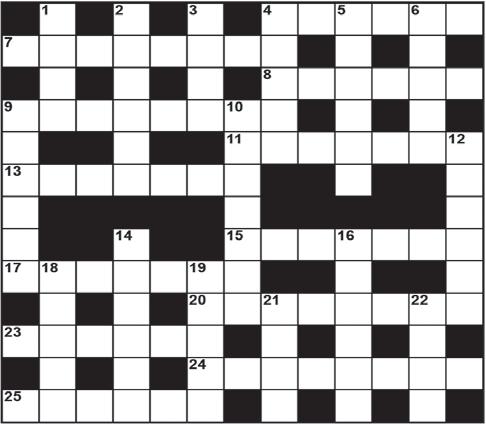


OH DEAR, SO MANY NEW CHANGES TO TAX RETURNS
There are so many changes around taxation this year. Here's a brief summary of the significant ones that could impact your tax return this year.
Refunds – since covid if your taxable income is less than $126,000 you would have received the low and middle income tax offset. This was an extra refund up to $1200 for the first two years and $1500 for 2022. This will not be paid from July 1, 2022, so your refund will probably be less in 2023. You could even be payable and not receive a refund.
Across
4 What is a prawn-like decapod crustacean? (6)
7 What is a national memorial to those killed in war? (8)
8 To give up work, is to do what? (6)
9 To punish, is to do what? (8)
11 What is a cardigan and matching jumper, worn by women? (4,3)
13 Name an illegal type of trading. (7)
15 What are dark patches in the sky, consisting of interstellar gases and dust? (7)

17 Name an alternative term for a small tree. (7)
20 What is an edible snail? (8)
23 To make protuberant, is to do what? (6)
24 Name an edible North American tidewater turtle. (8)
25 Name the second book of the Old Testament. (6)
Solution next edition Down
1 What, in machinery, is the engagement of gear teeth? (4)
2 Name the practice of growing very small examples of trees. (6)
3 Which island province of Indonesia is east of Java? (4)
4 Name a more common word for a termagant. (5)
5 What is the innermost coat of the posterior part of the eyeball? (6)
6 Name a particular code once used in telegraphy. (5)
9 Name a town in NE Queensland, on the western shore of Trinity Bay. (6)
10 Which threads are used for tying parcels? (7)
12 What is a special natural aptitude? (6)
14 Name the nut of a tree which grows in warm temperate regions. (6)
16 To be not substantial, is to be what? (6)
18 To mingle or add to, is to do what? (5)
19 Which structures are formed by birds? (5)
21 Name another term for maize. (4)
22 Columbus is the capital of which of the United States? (4)
Home office expenses – the rate this year is 67 cents an hour this includes internet costs, phone expenses, electricity and gas and stationery. You can no longer claim these. Until February 28, 2023, you only need a record of "representative" hours worked from home. However, from March 1 you need a record of actual hours worked, you cannot make an estimate. You can still claim for a home office by apportioning costs such as phone, electricity, but not interest unless you are carrying on a business. But if you are carrying on a business watch out because a percentage of your home could be subject to capital gains tax when you sell.
Mobile phone and internet – can only be claimed if you do not claim home office. Also if your phone records do not detail your work use for one month including data then your claim is limited to $50 for phone and $50 for data.

Cleaning and laundry – expect scrutiny of your return if you are also claiming home office as there is an expectation that these claims will be less if you are in the office for less time.
Motor vehicle expenses – the rate for 2022-2023 is 78 cents a kilometre up to a maximum claim of 5000 kilometres. Make sure you can justify your claim for kilometres travelled.
Rental properties – remember the golden rule that it's the purpose of borrowing that determines the deductibility of interest. Be careful if you repay part of your mortgage and then redraw it. That redraw may not be tax deductible. It may be better to have an offset account. If you have a holiday home, make sure to apportion your costs correctly. Your claims for repairs on a new rental property may not be allowable if the need existed at the time of purchase. Lastly your Airbnb claims need apportioning. Cryptocurrencies and CFDs – profits need to be included in your tax return and the ATO has information on your crypto trading. Superannuation – if you have been drawing down a reduced pension you will now have to draw your full pension at the rate prescribed.
Budget announcements not yet law – If you are making donations this year, make sure the organisation is registered as a DGR so you can claim the deduction. Some changes to organisations were covered in the budget and will be legislated later. If your superannuation is close to or exceeds $3 million an additional tax has been proposed from July 1, 2025. Also from July 1, 2026, your employer will have to pay your super guarantee payments at the same time as your salary or wages.
This is just a brief summary but if you require more detail contact the experts at Gail Freeman & Co on 6295 2844.
Disclaimer
This column contains general advice, please do not rely on it. If you require specific advice on this topic please contact Gail Freeman or your professional adviser.



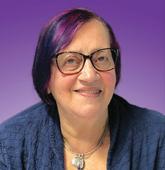
Authorised Representative of Lifespan Financial Planning Pty Ltd AFS Lic No. 229892.

CityNews May 25-31, 2023 31
CHARTERED ACCOUNTANT Gail Freeman & Co Pty Ltd 02 6295 2844 Unit 9, 71 Leichhardt Street, Kingston ABN 57 008 653 683 (Chartered accountant, SMSF specialist advisor and Authorised Representative of Lifespan Financial Planning Pty Ltd AFS Lic No. 229892) info@gailfreeman.com.au | www.gailfreeman.com.au
ADVERTISEMENT Follow us on Facebook @gailfreemanandco Connect with me on Linkedin bit.ly/3bcXEZl
Sudoku hard No. 341 Solutions – May 18 edition
Solution next edition Crossword No. 881 Sudoku medium No. 341
FREE PUZZLES EVERY DAY AT citynews.com.au
WINNUNGA NIMMITYJAH ABORIGINAL HEALTH AND COMMUNITY SERVICES
Winnunga Nimmityjah AHCS is an Aboriginal community controlled primary health care service operated by the Aboriginal community of the ACT. In Wiradjuri language, Winnunga Nimmityjah means Strong Health. The service logo is the Corroboree Frog which is significant to Aboriginal people in the ACT.

Our aim is to provide a culturally safe, holistic health care service for the Aboriginal and Torres Strait Islander people of the ACT and surrounding regions. The holistic health care provided by Winnunga AHCS includes not only medical care, but a range of programs to promote good health and healthy lifestyles.
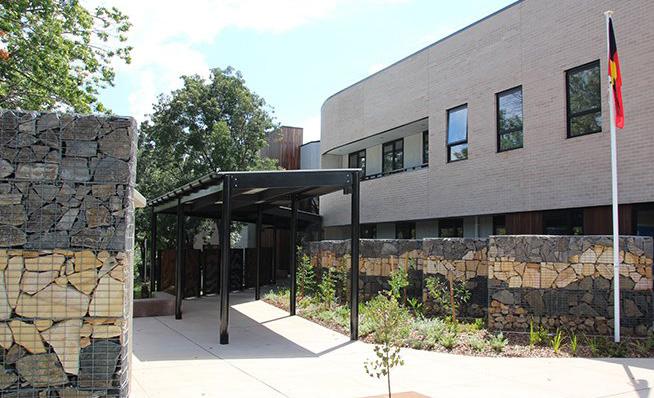
Our services include:
• GP and Nursing
• Midwifery
• Immunisations
• Health Checks
• Men’s & Women’s Health
• Hearing Health
• Dental
• Physiotherapy
• Podiatry
• Dietician (Nutrition)
• Counselling
• Diabetes Clinic
• Quit Smoking Services / No More Boondah

• Needle Syringe Program
• Mental Health Support
• Healthy Weight Program
• Healthy Cooking Group
• Mums and Bubs Group / Child Health
• Optometry Service

• Psychology and Psychiatrist
• Community Events
• Groups
ALL OUR SERVICES ARE FREE OF CHARGE • WE MAY BE ABLE TO ASSIST WITH TRANSPORT
Winnunga AHCS is a national leader in accreditation, was one of the first Aboriginal community controlled health services to achieve dual accreditation under RACGP and QIC standards. Winnunga AHCS has been at the forefront of setting a national agenda for quality improvement in Aboriginal community controlled health and continues to advocate locally and nationally for best practice standards in operational and governance areas of Aboriginal health services.
CLINIC hours | MONDAY TO FRIDAY 9am-5pm
Ph: 6284 6222 | 63 Boolimba Cres, Narrabundah www.winnunga.org.au
COVID-19 Vaccinations and Testing for Winnunga Clients































































































































































































 By Helen Musa
By Helen Musa








































